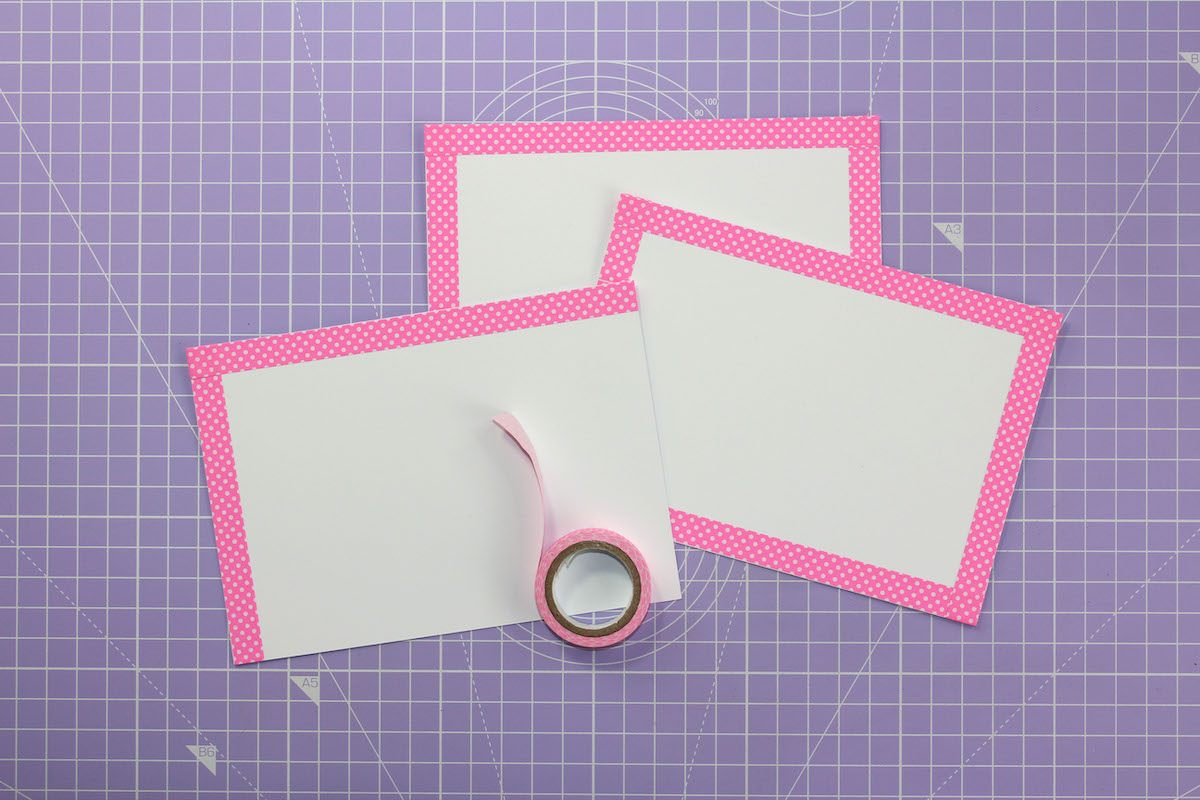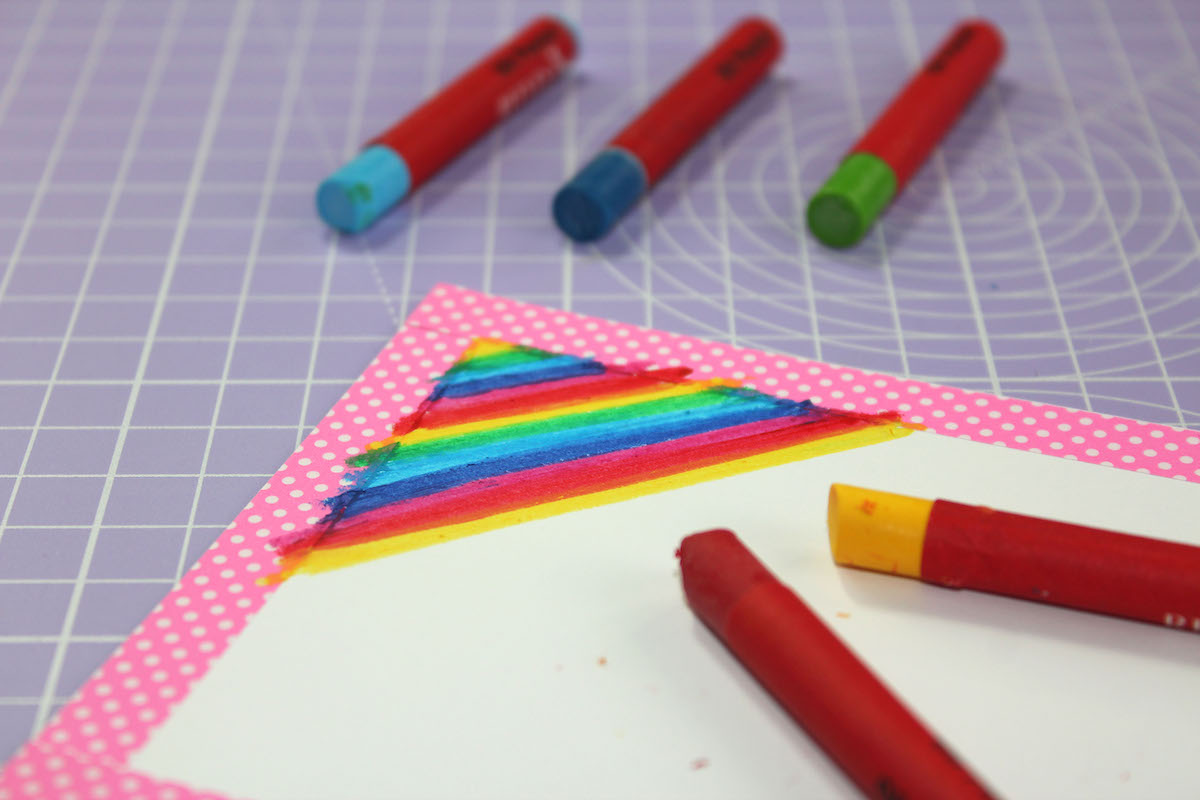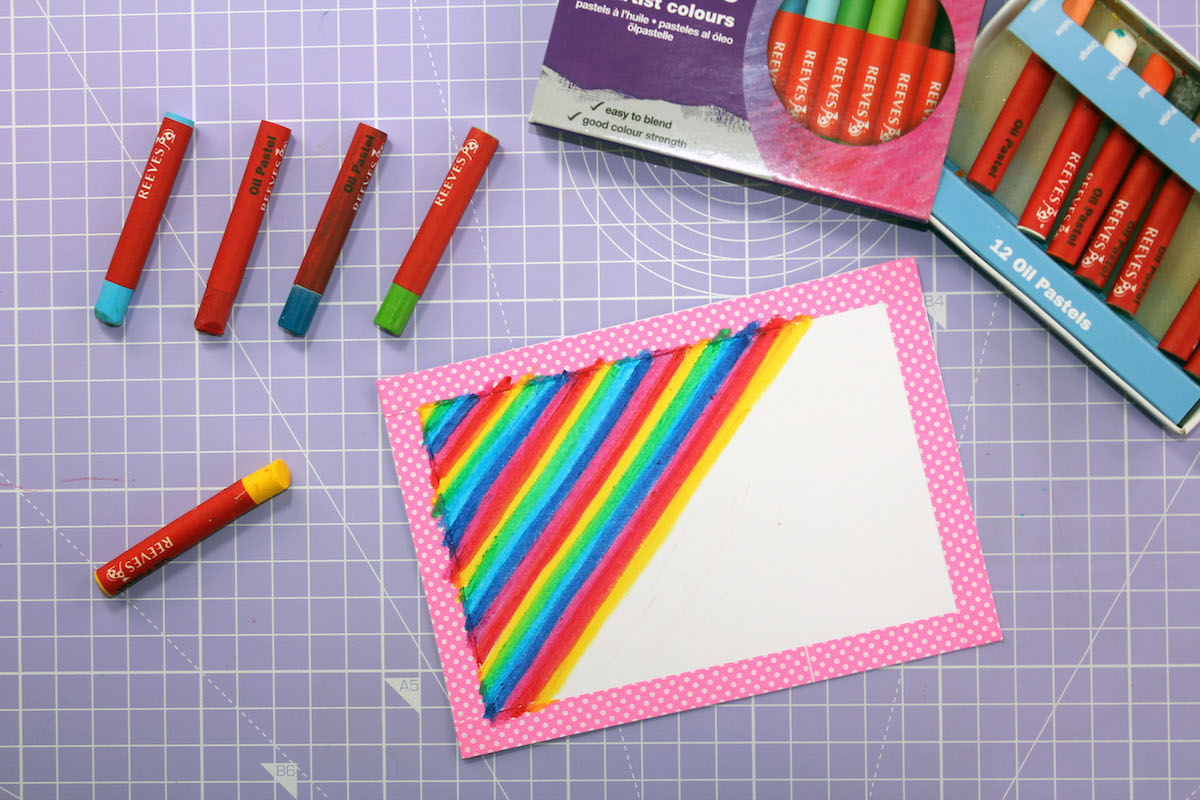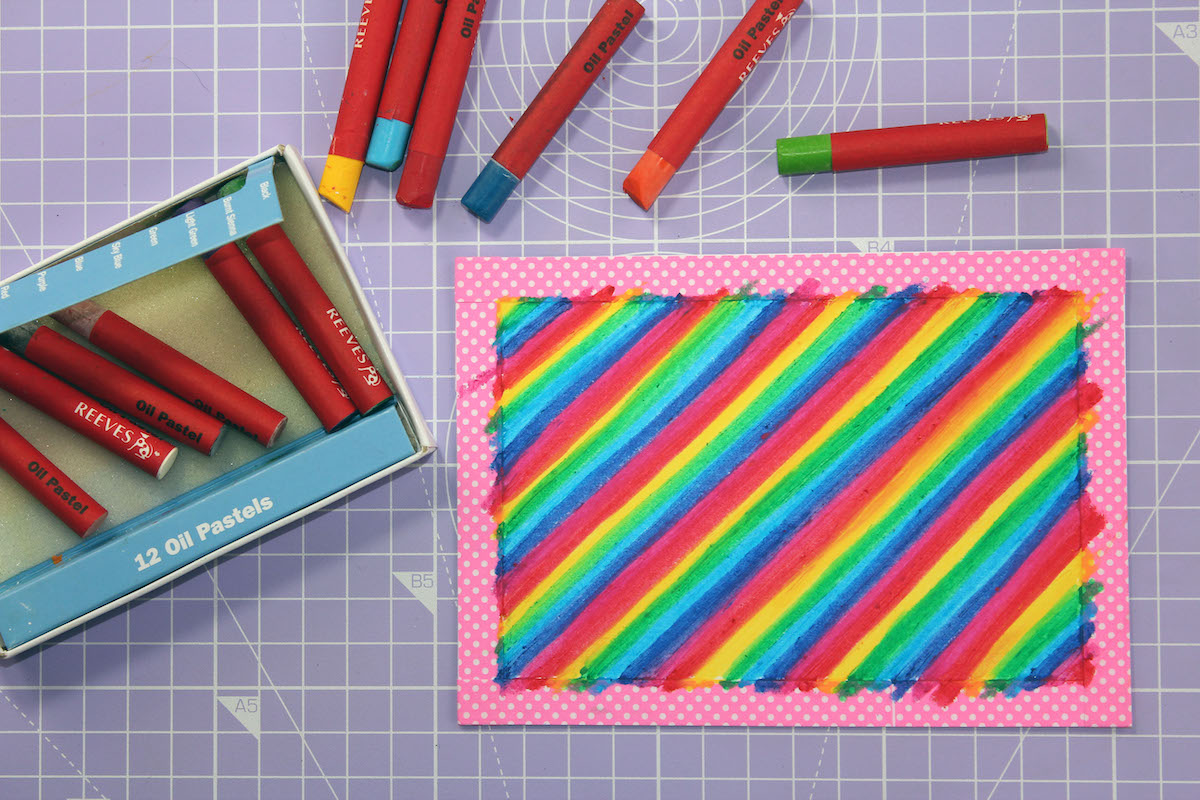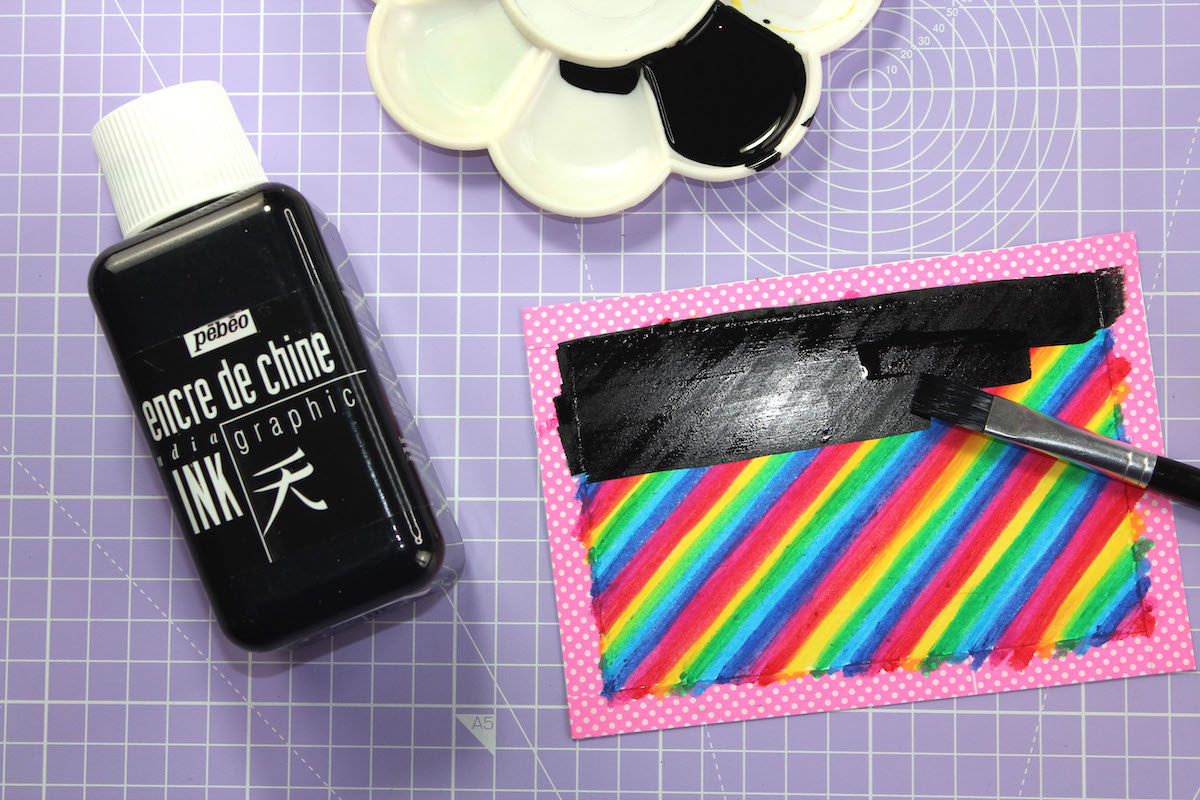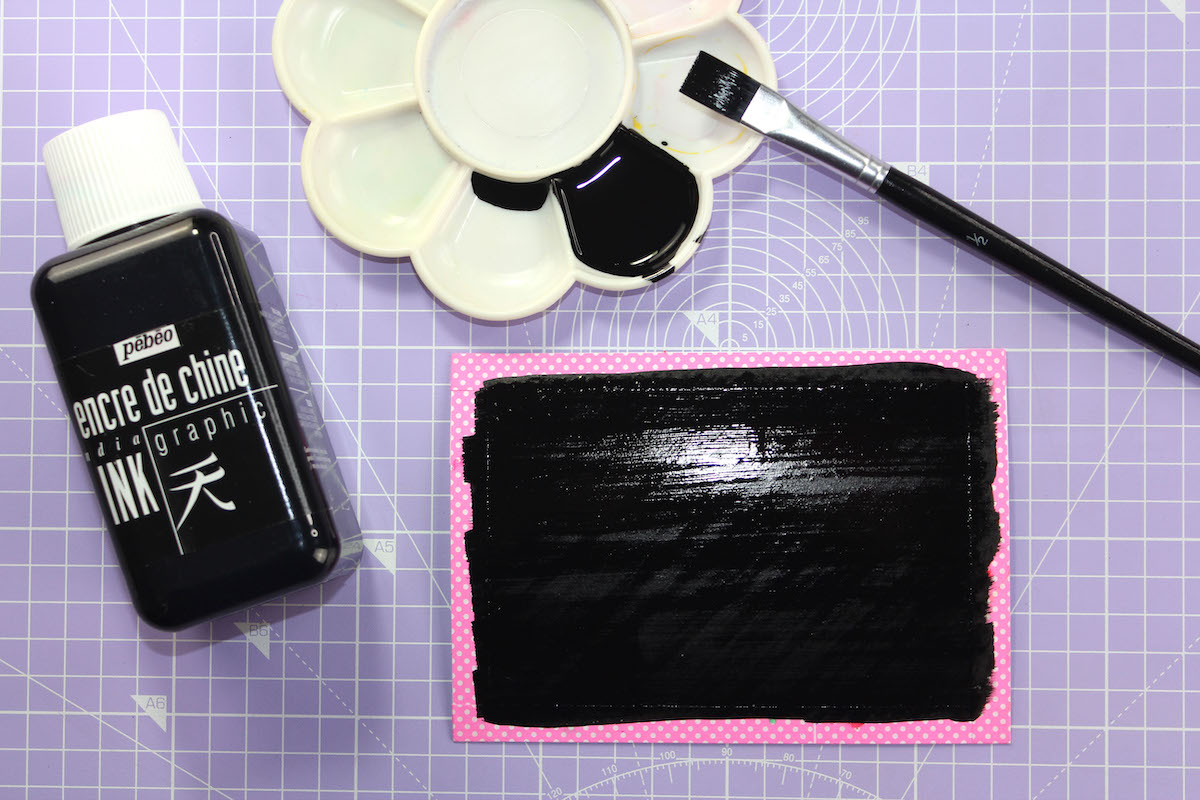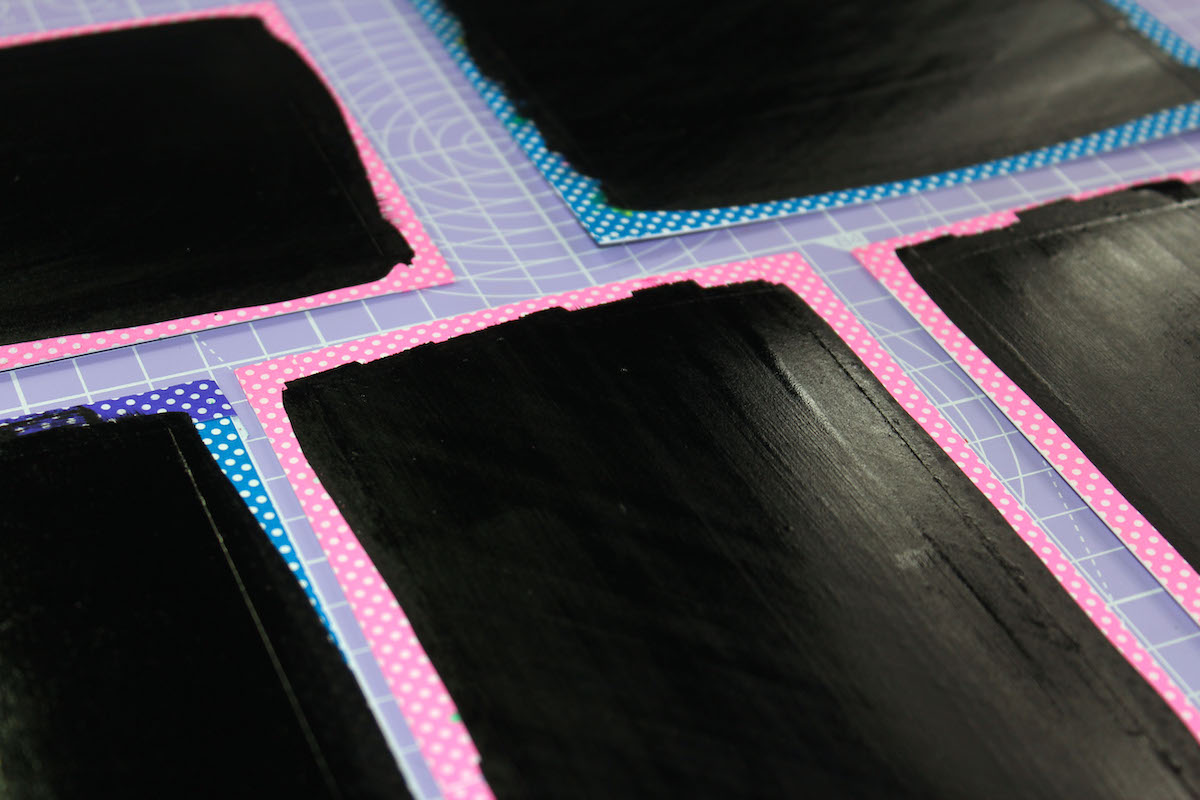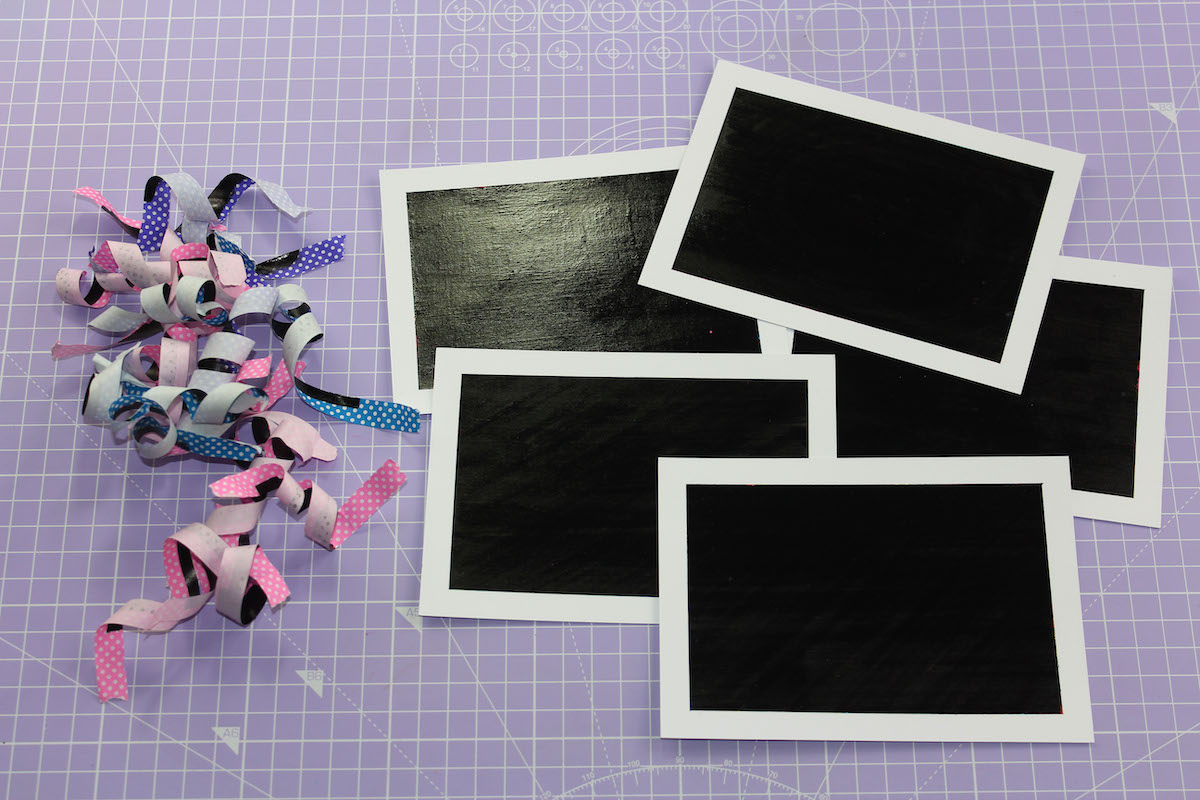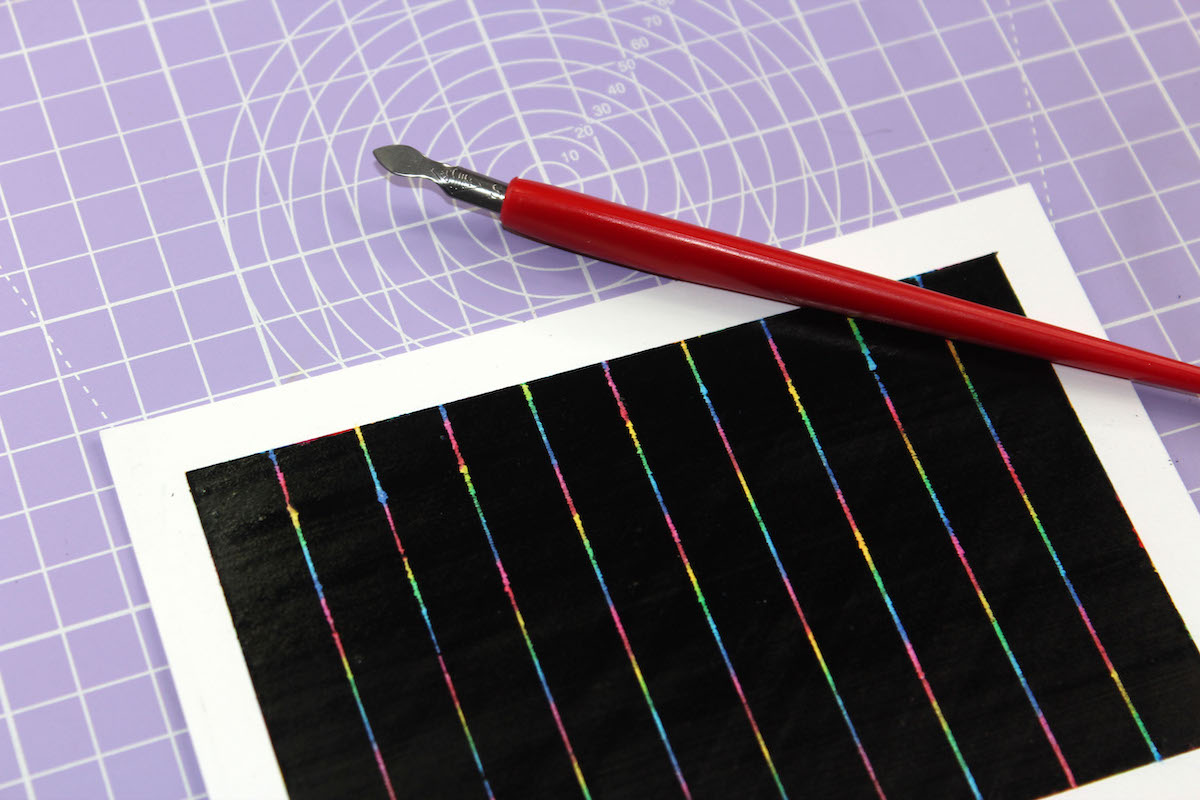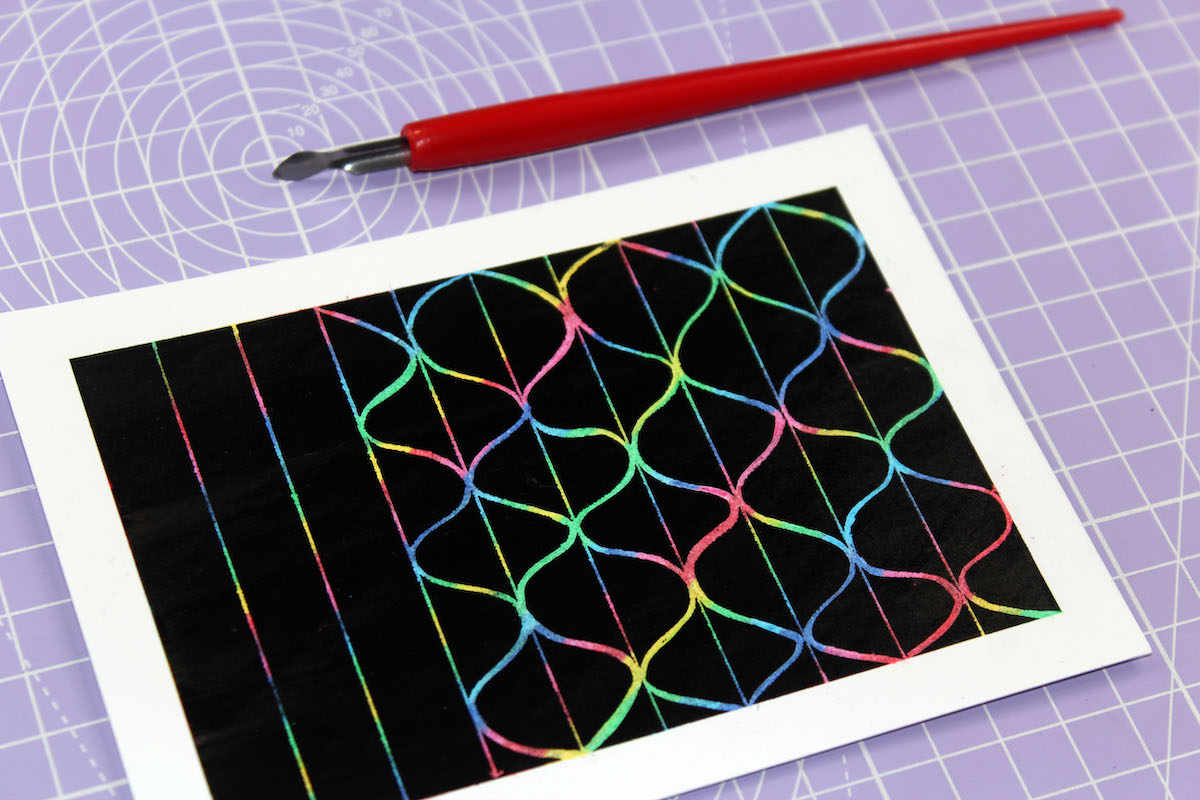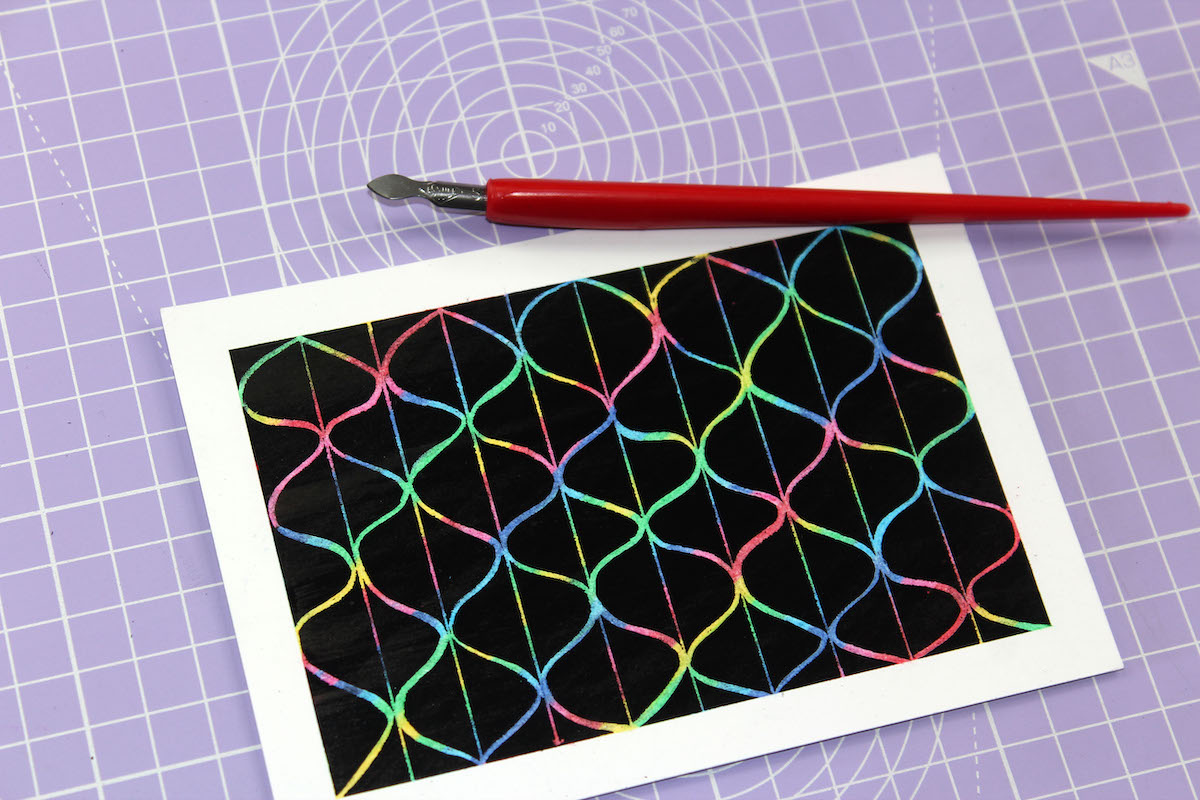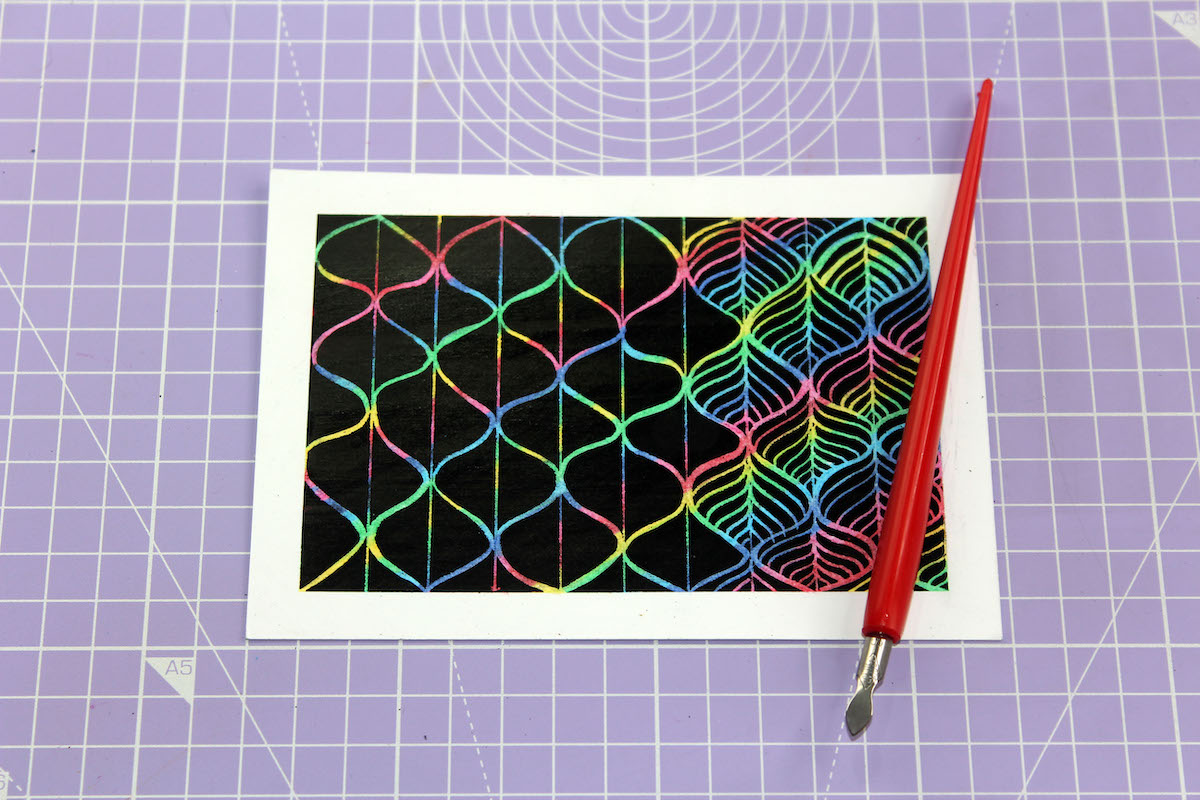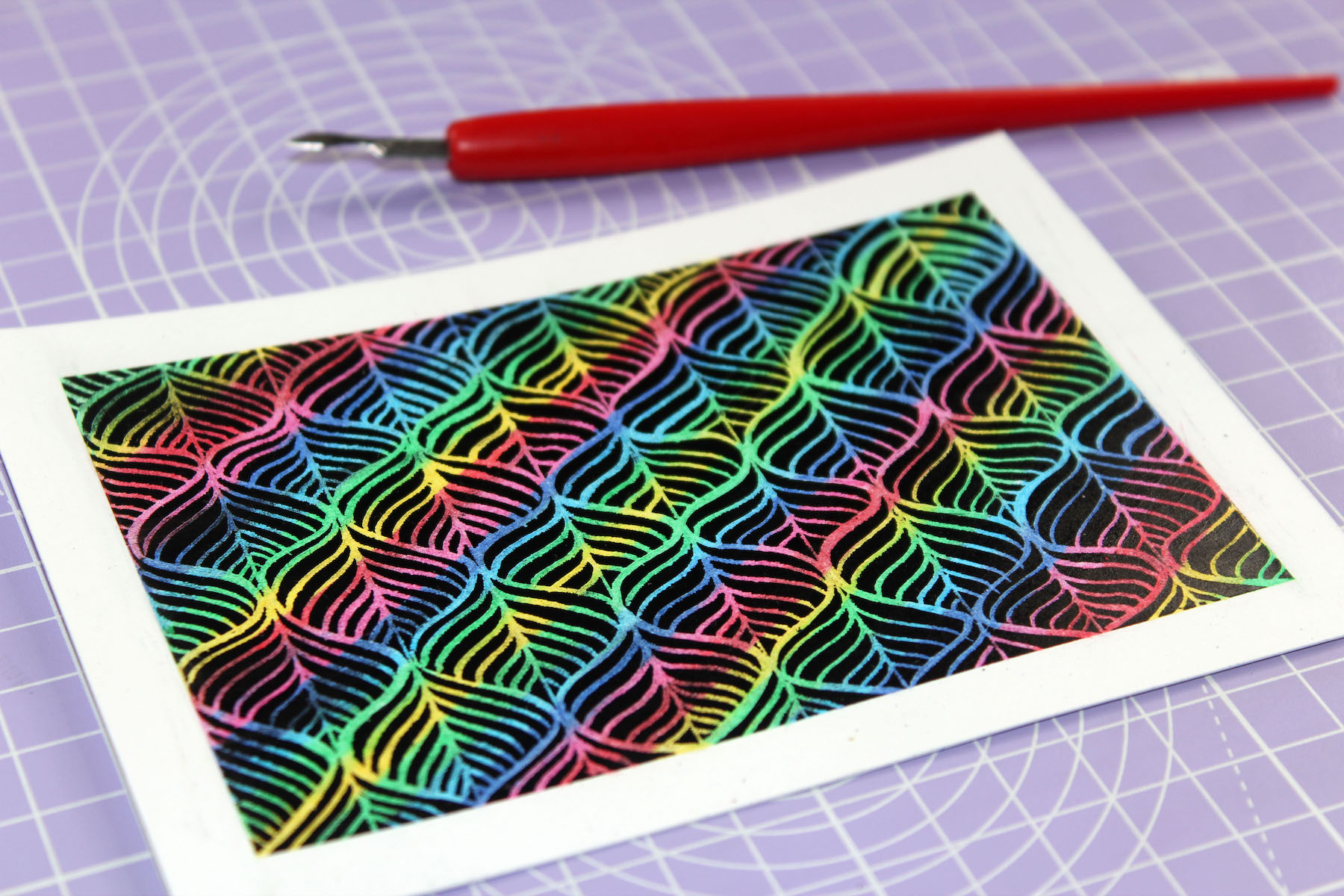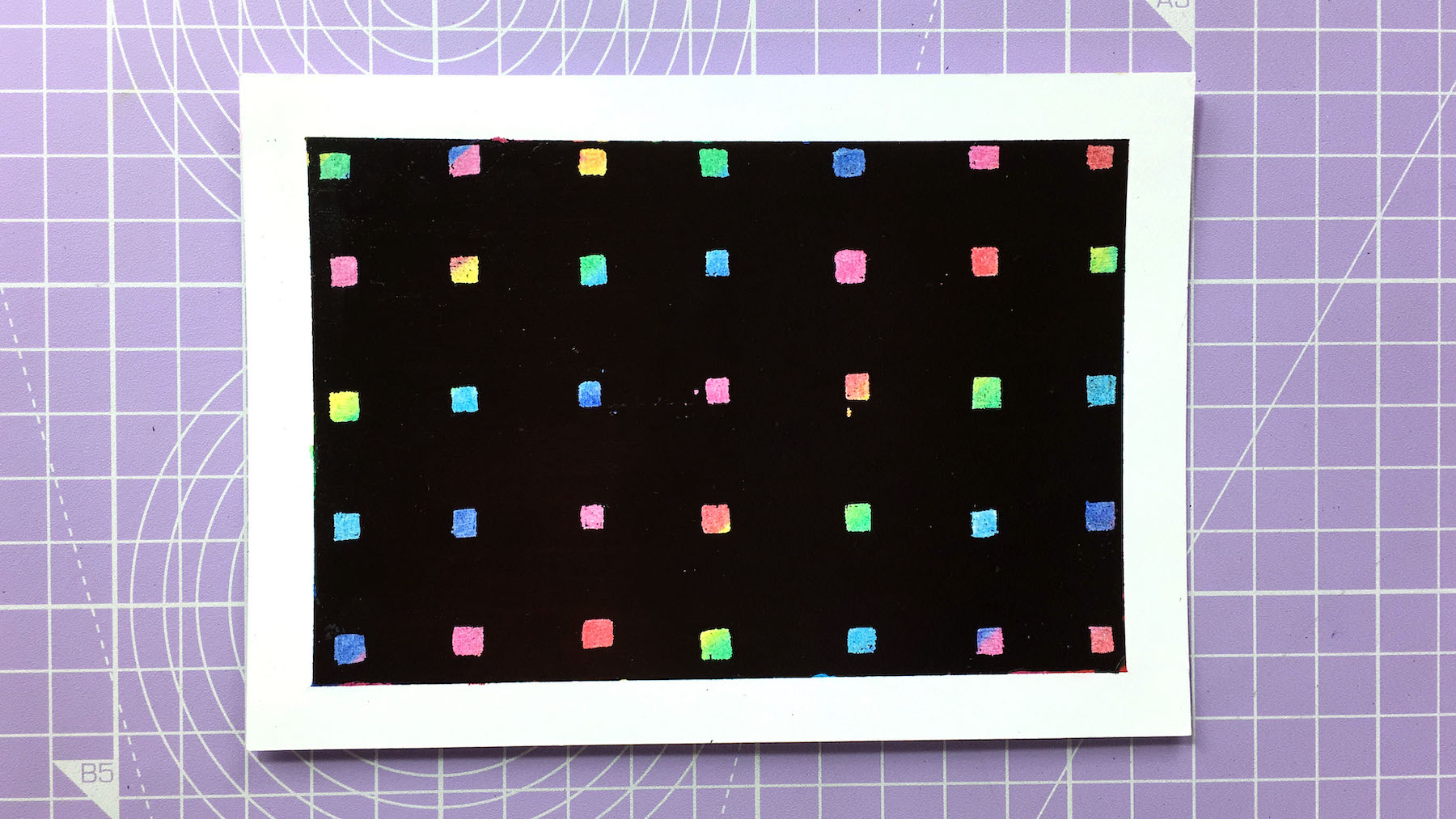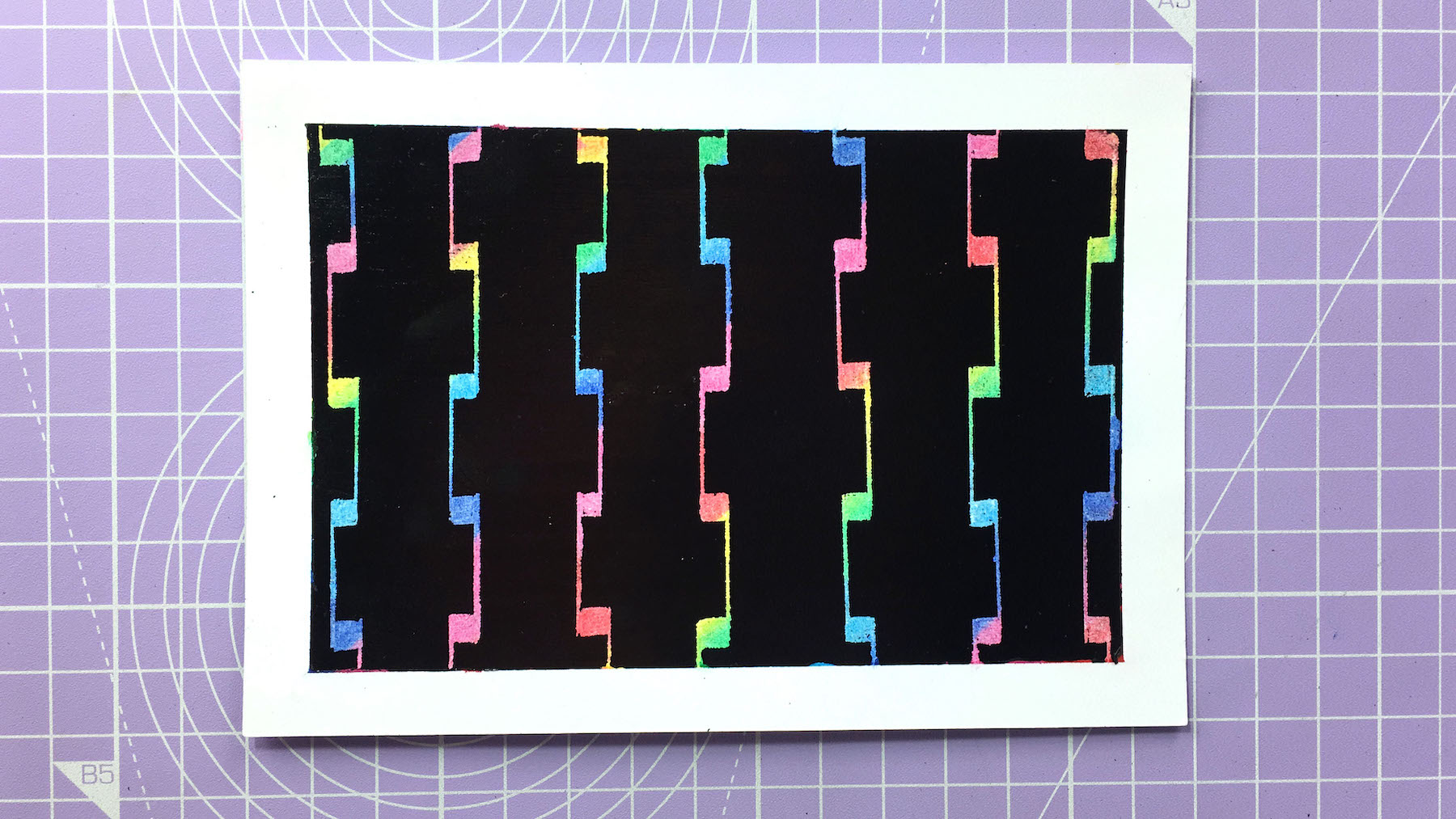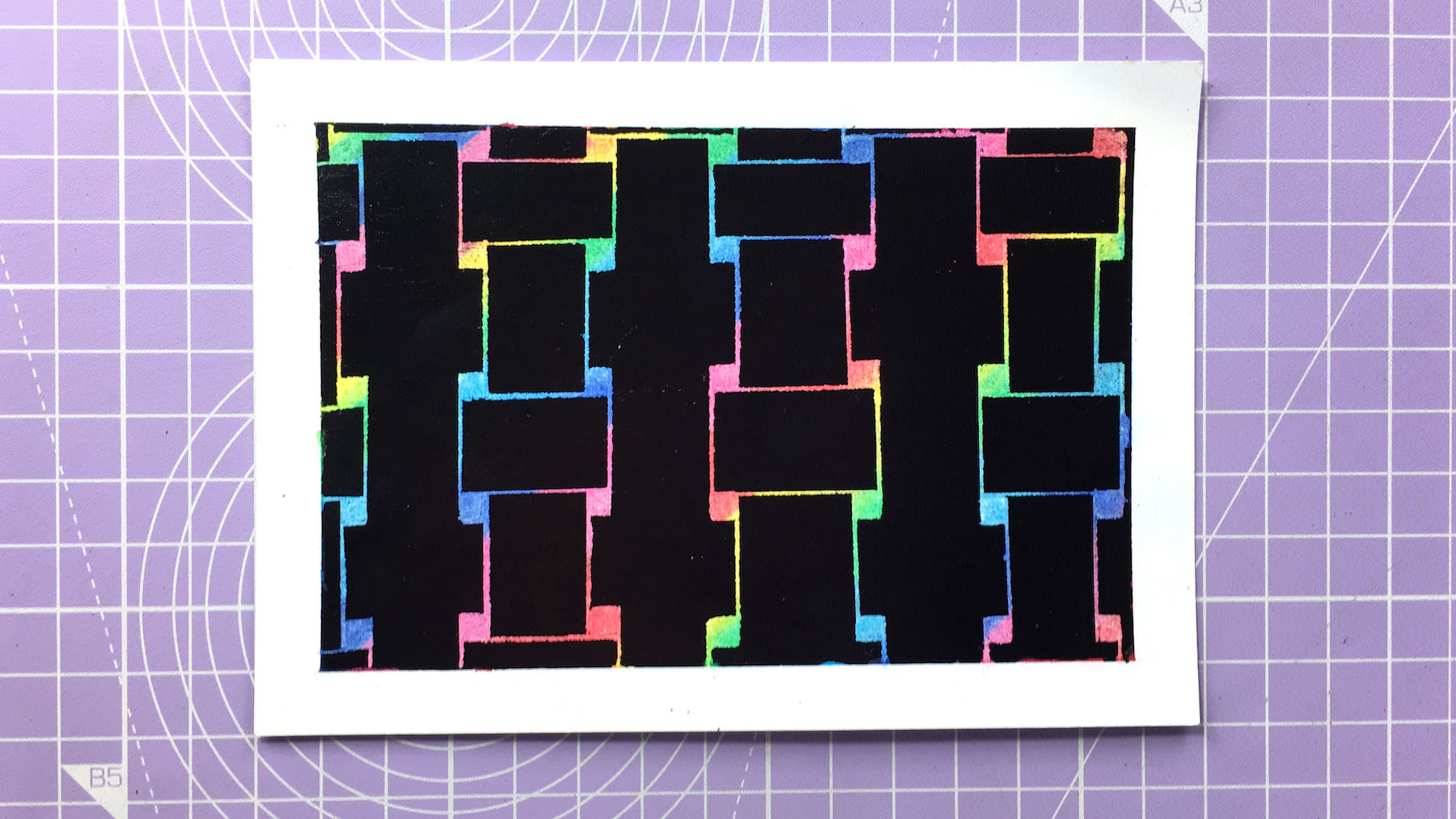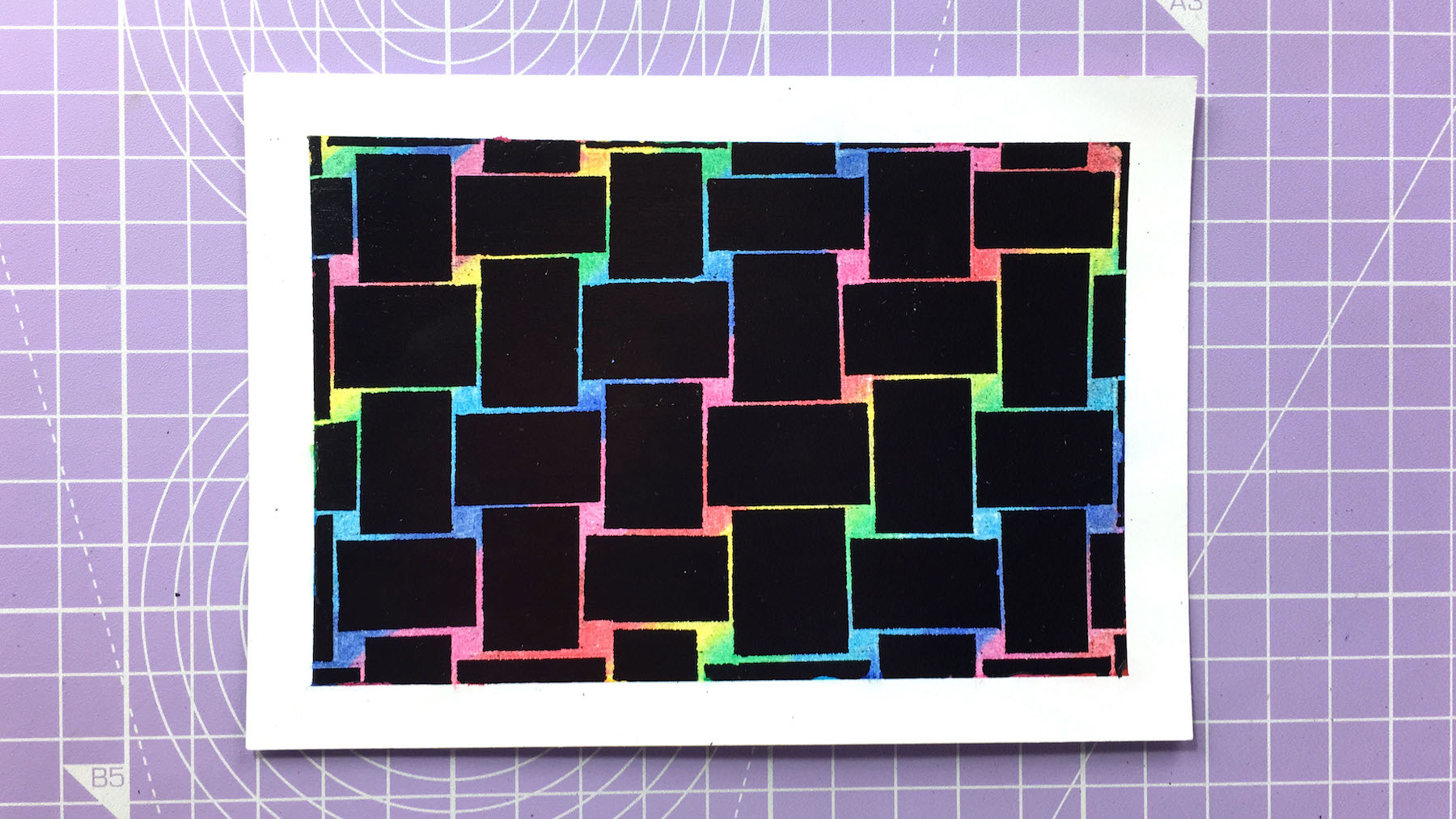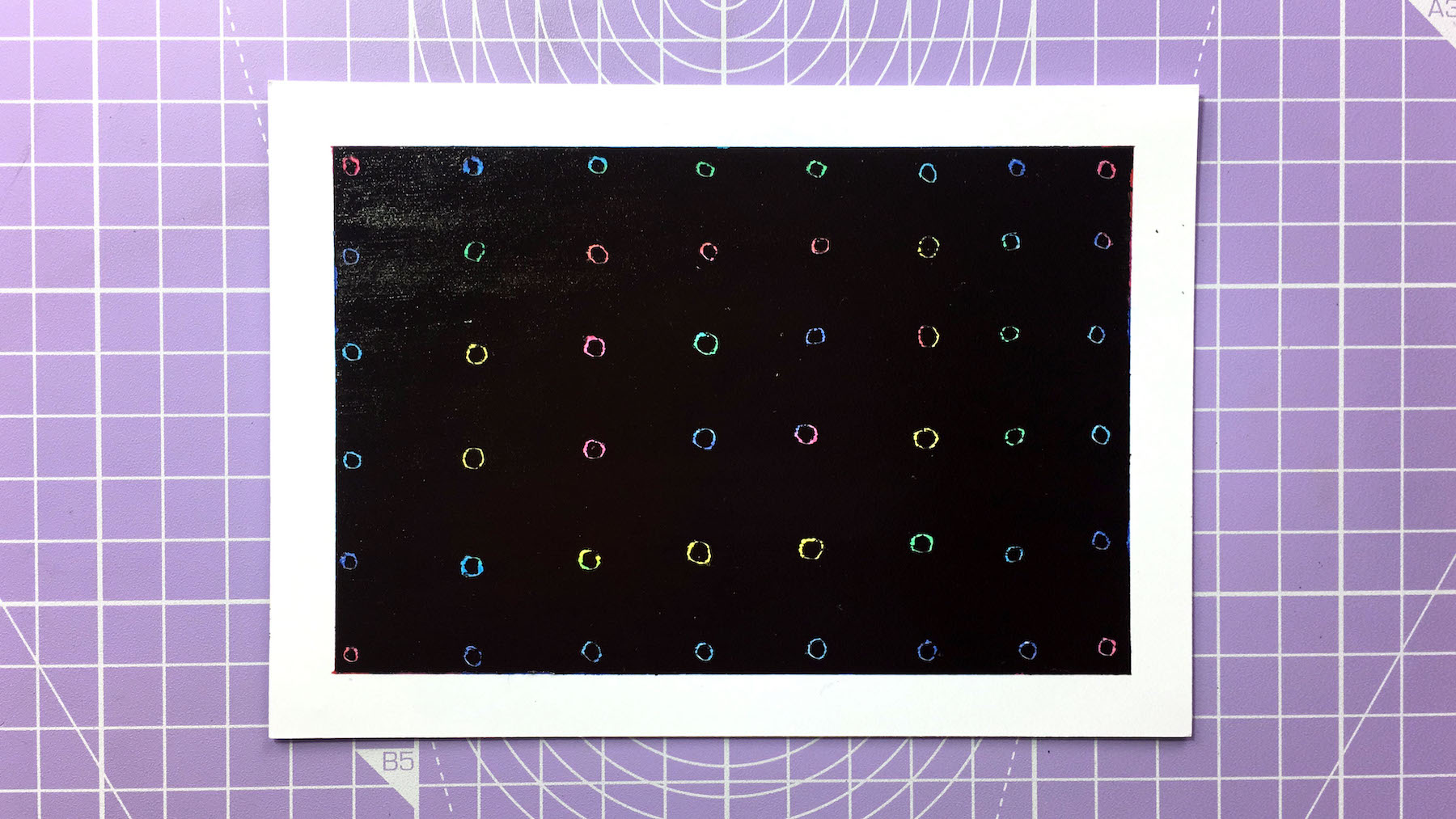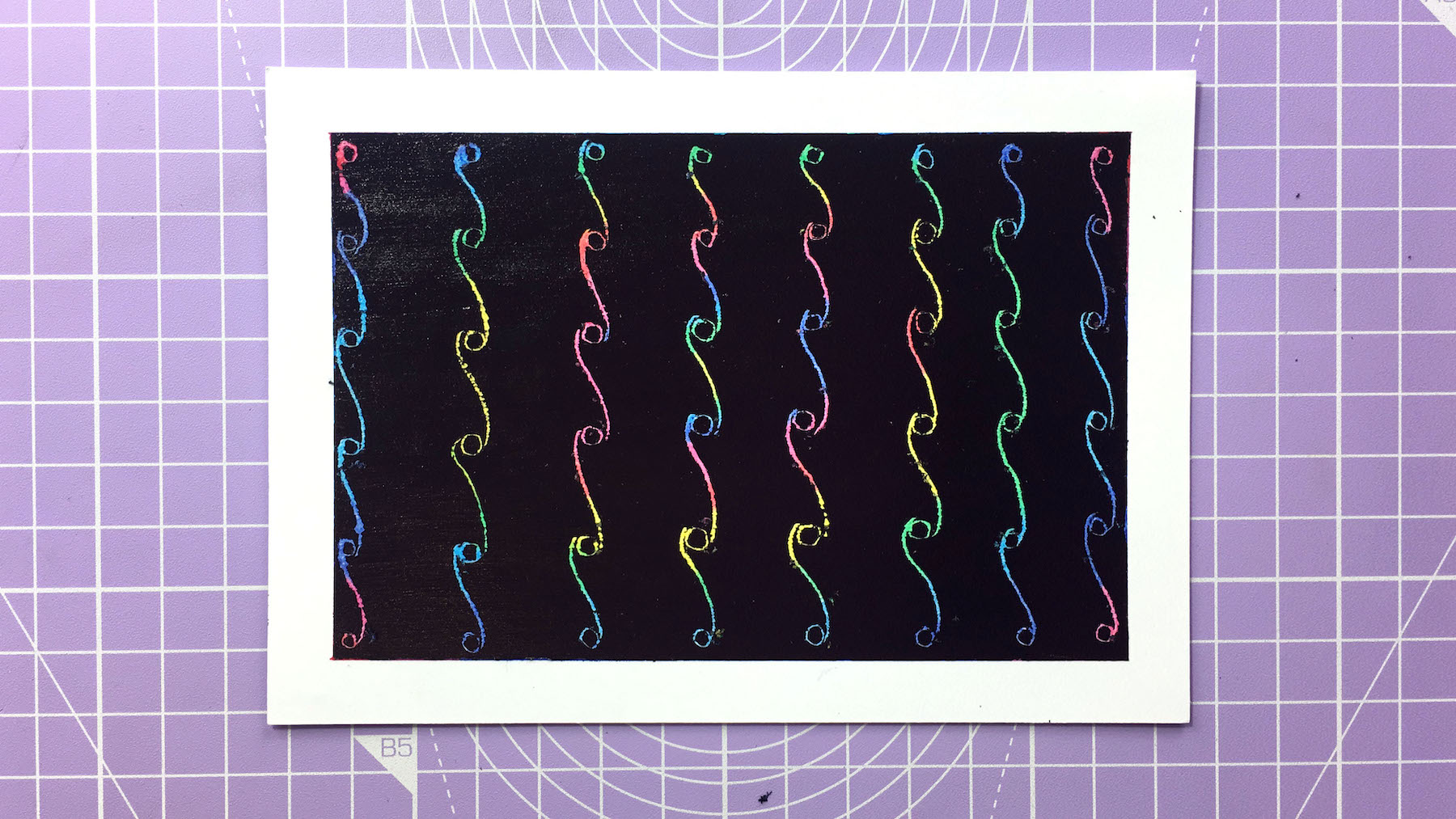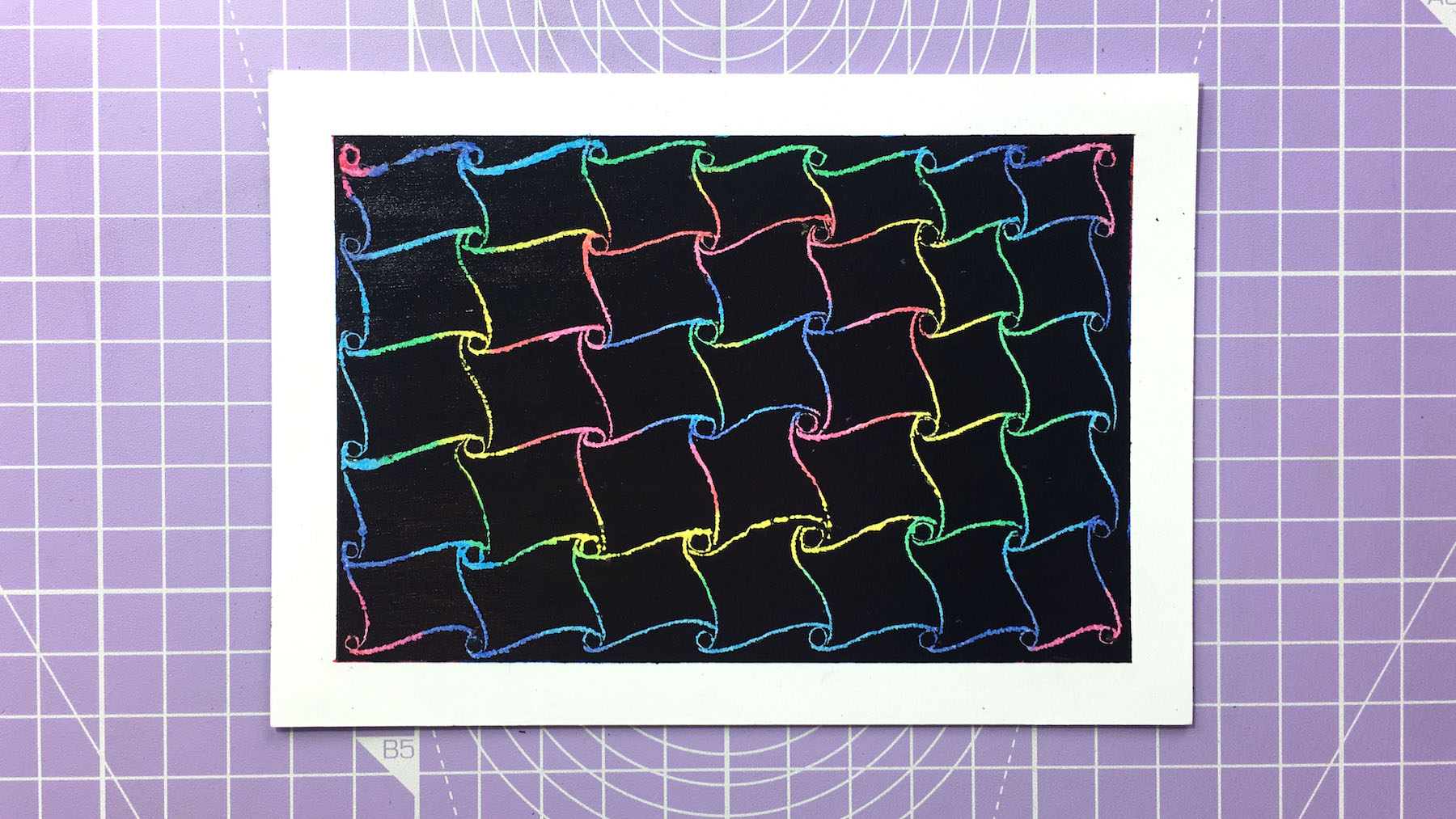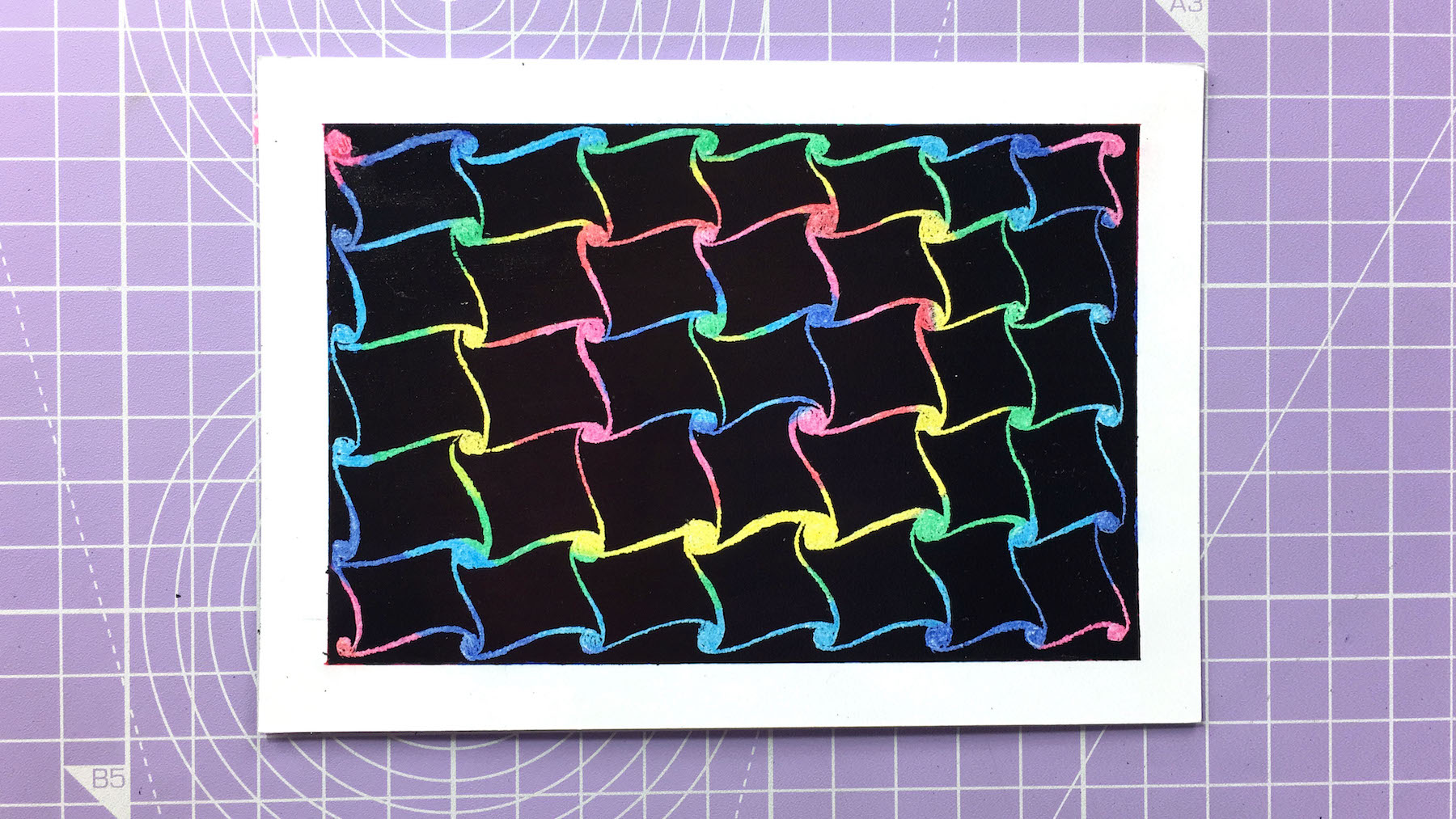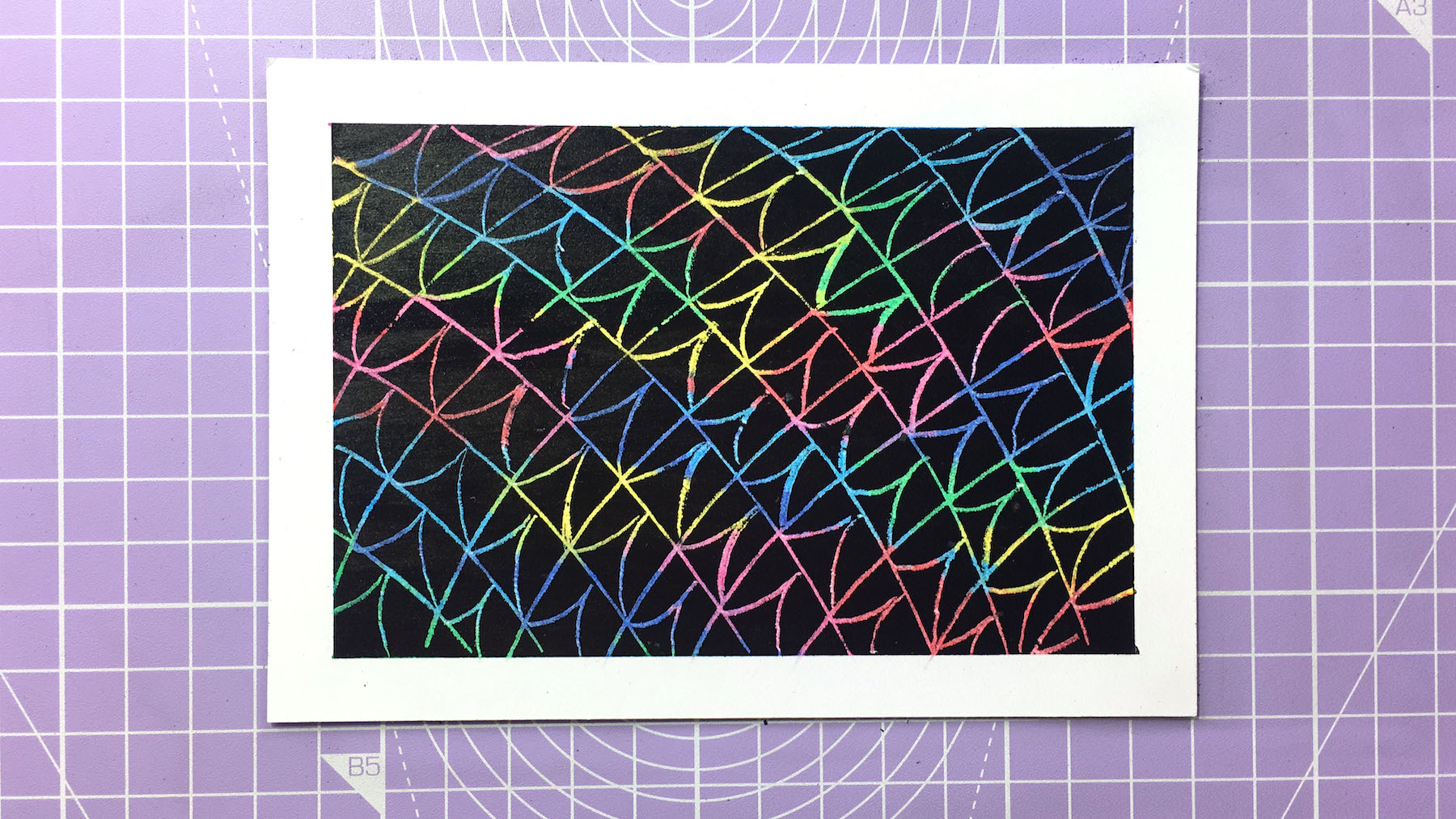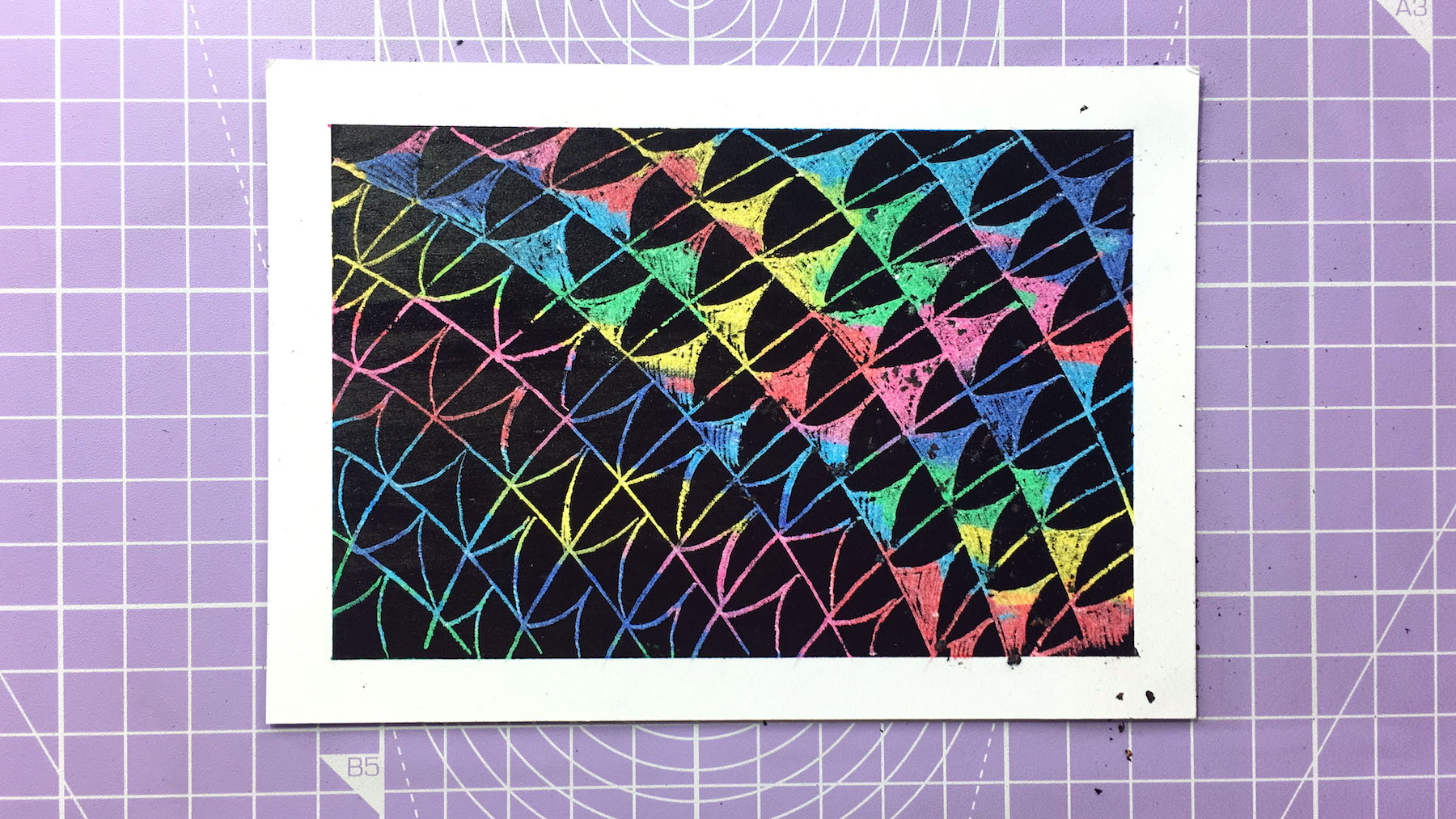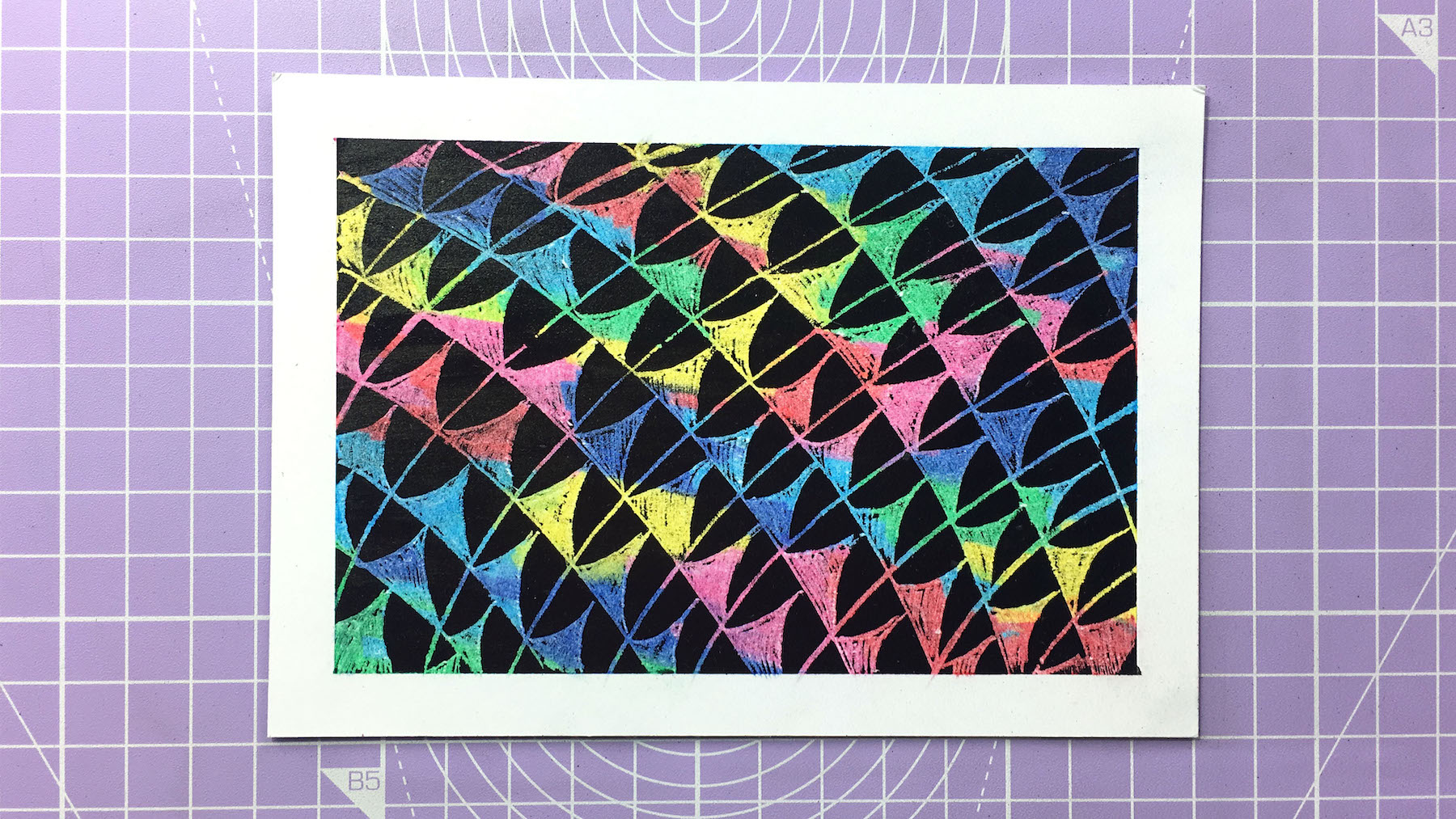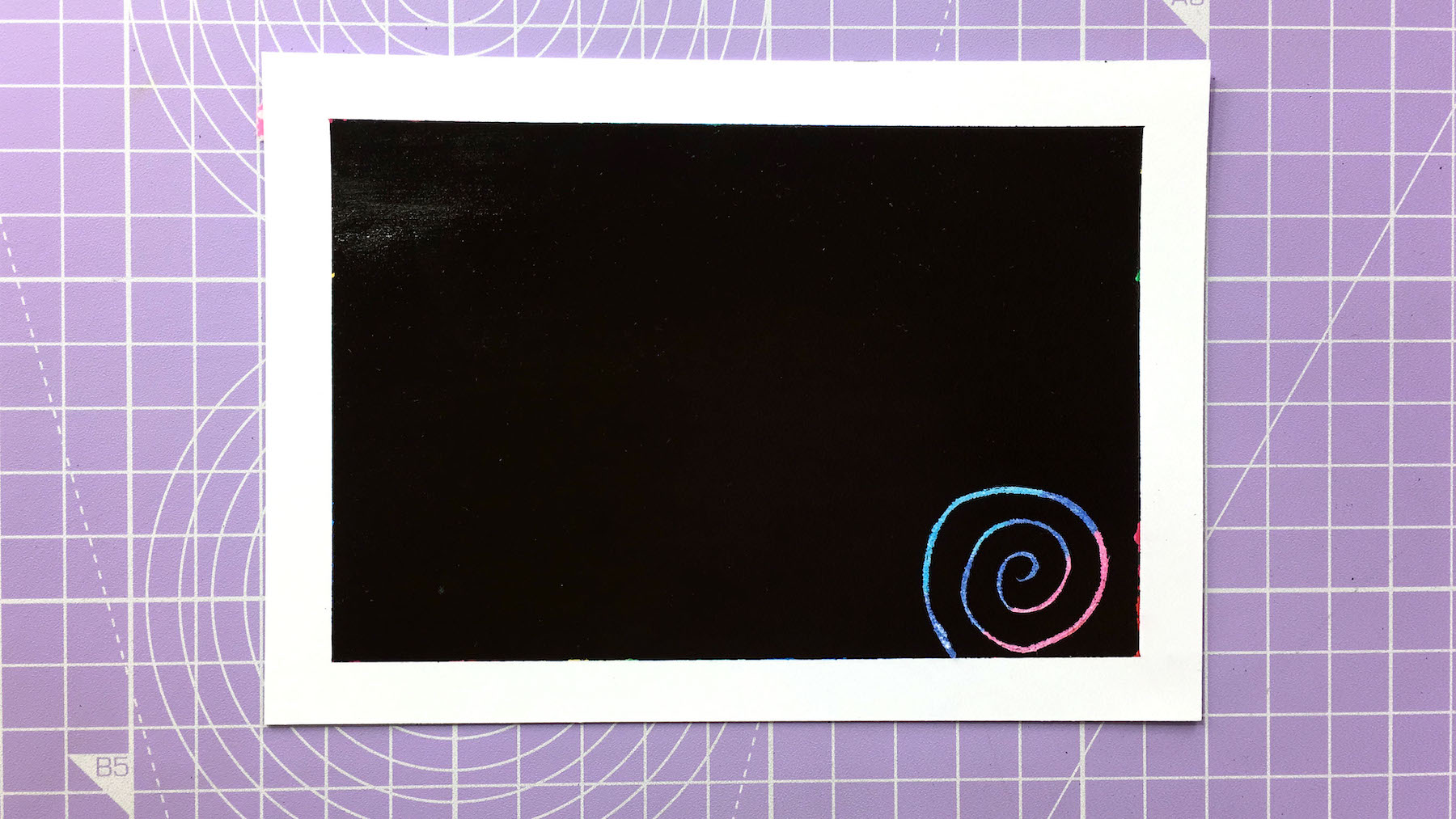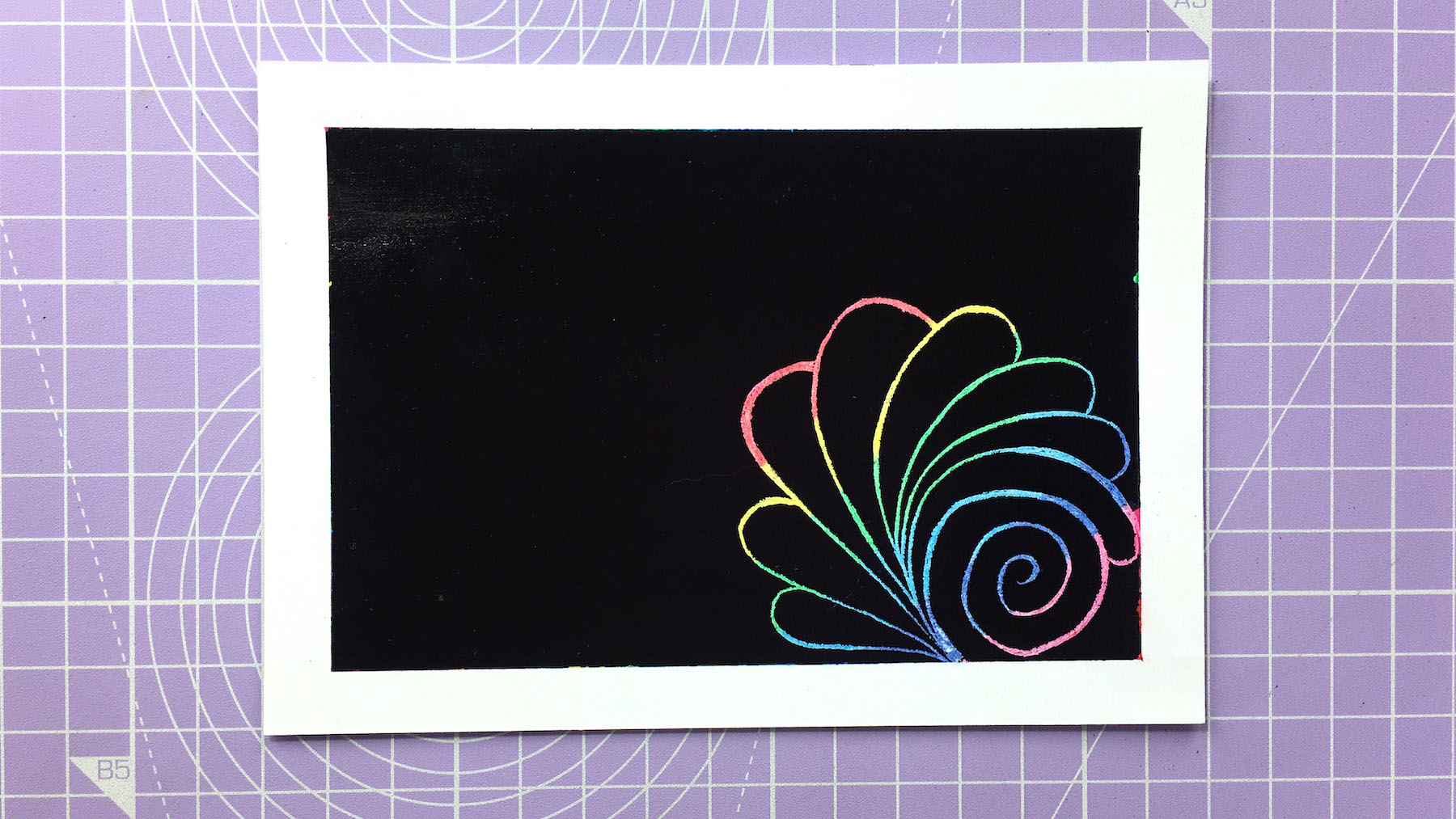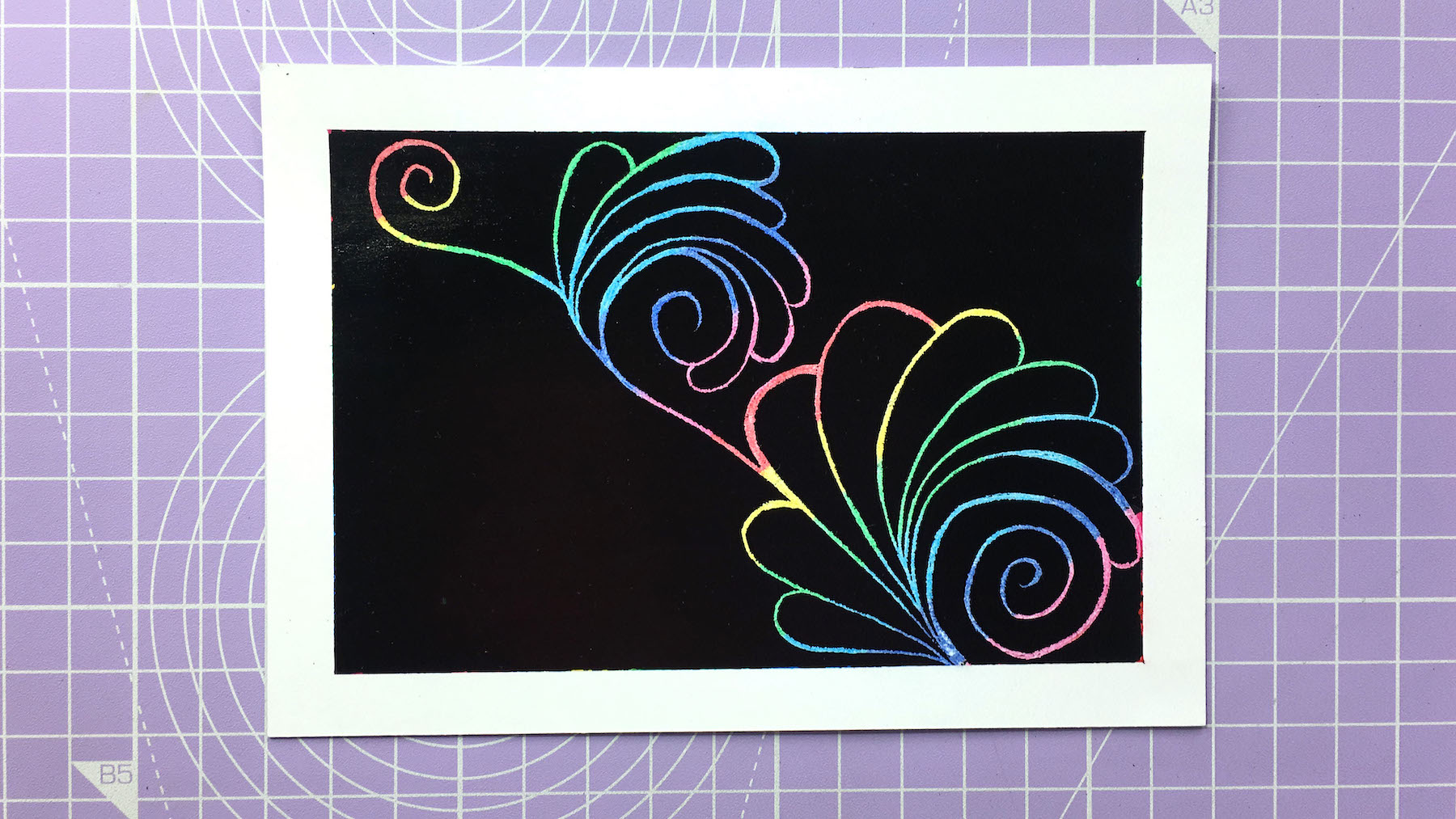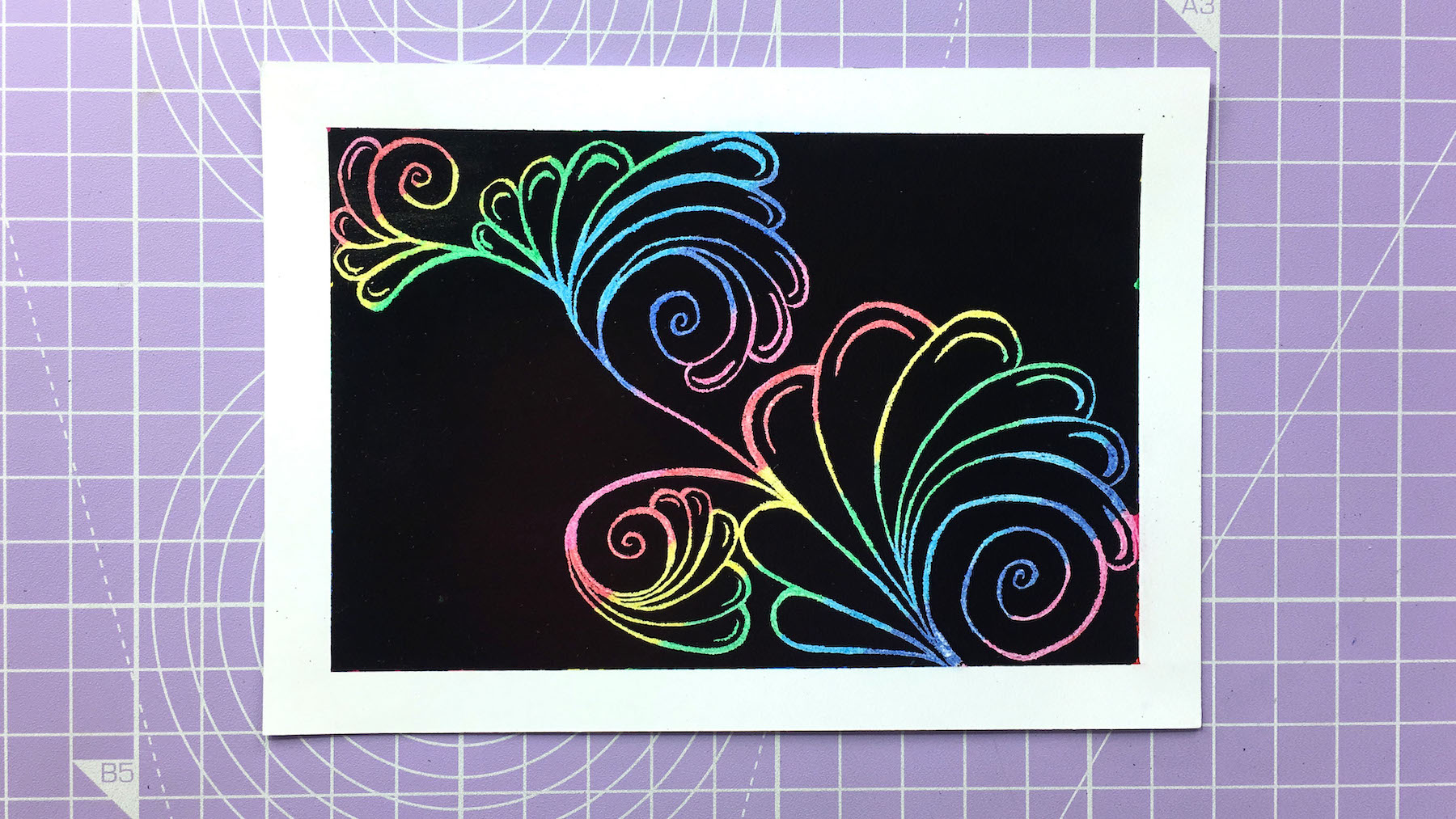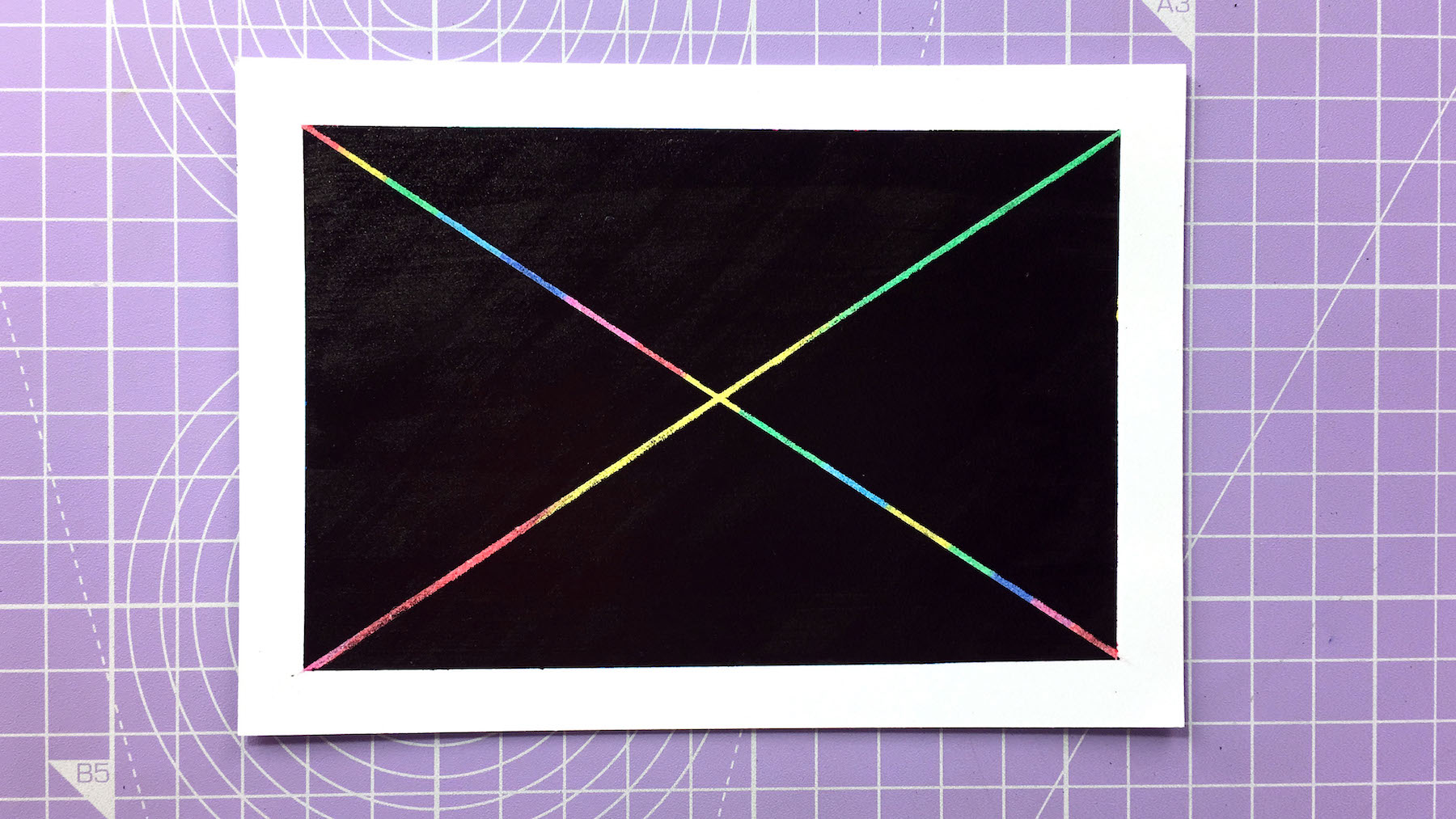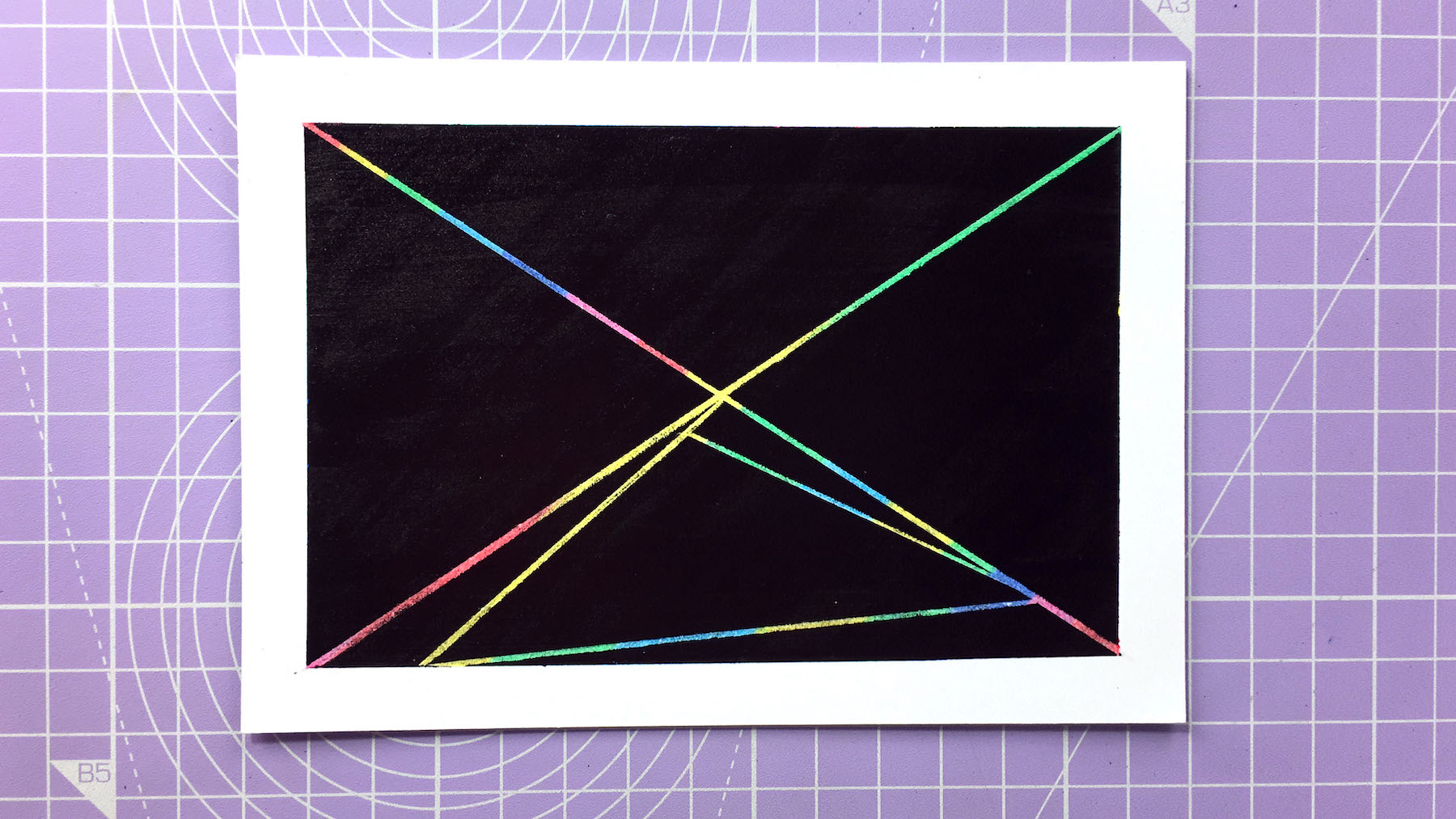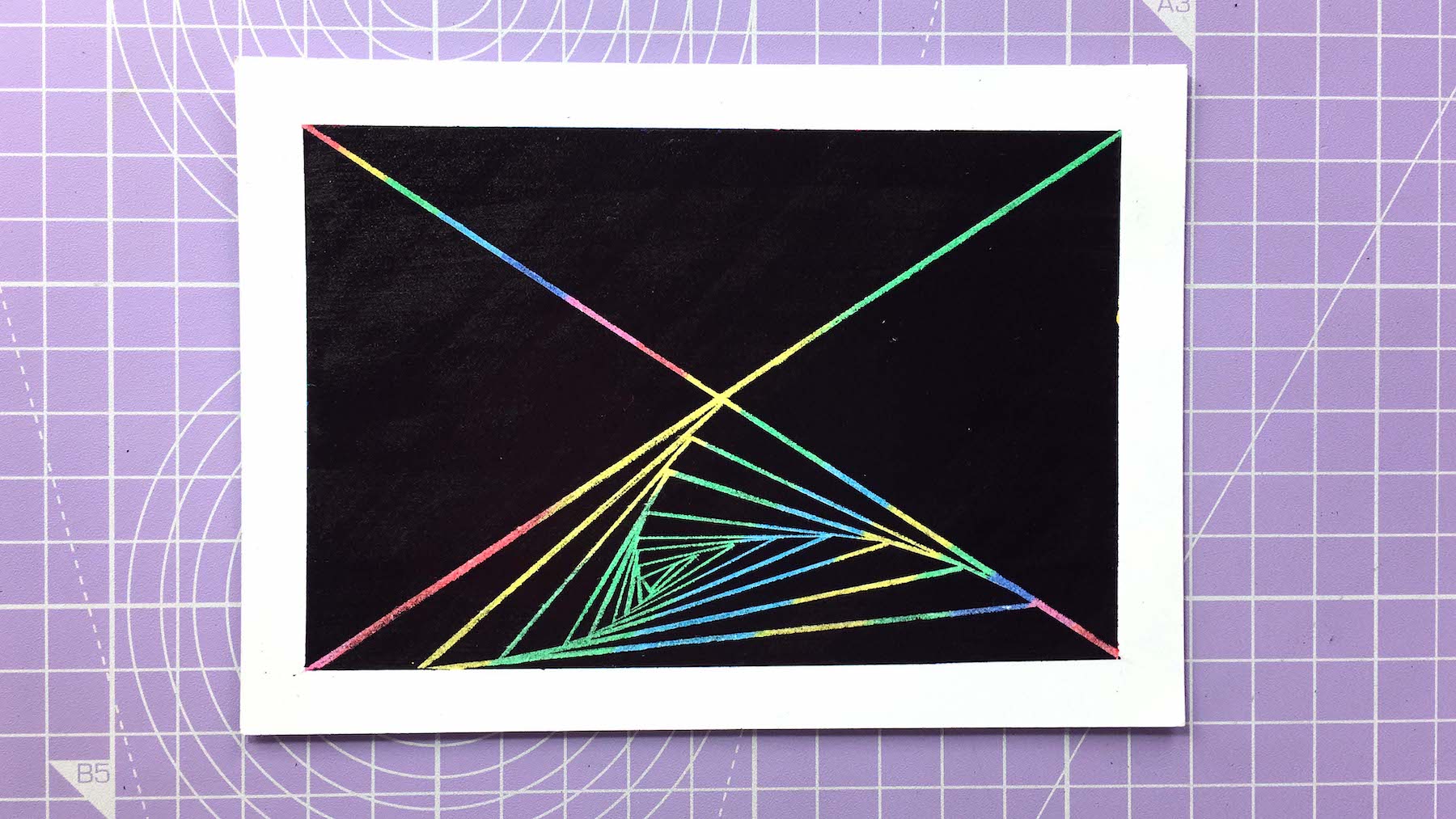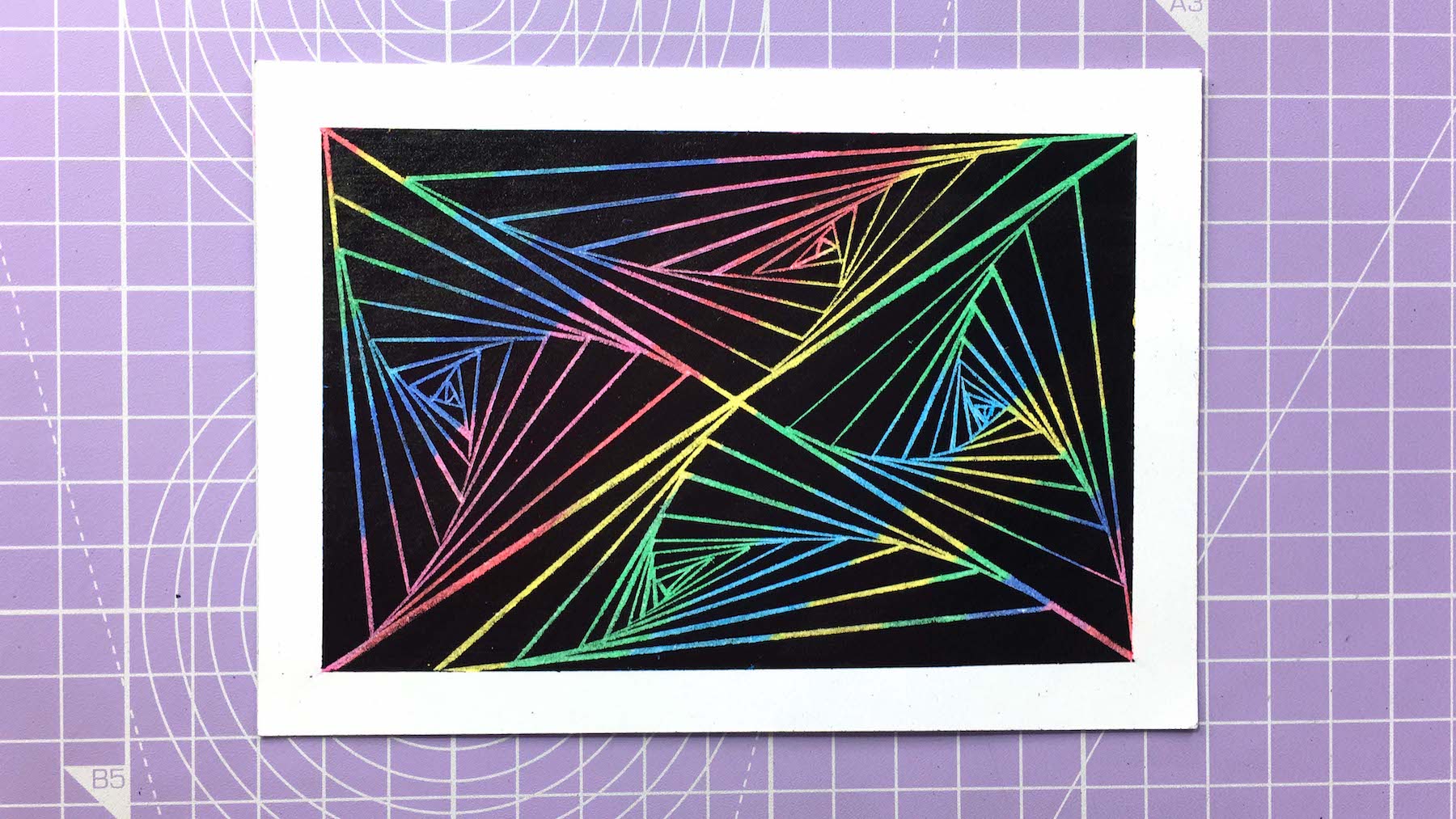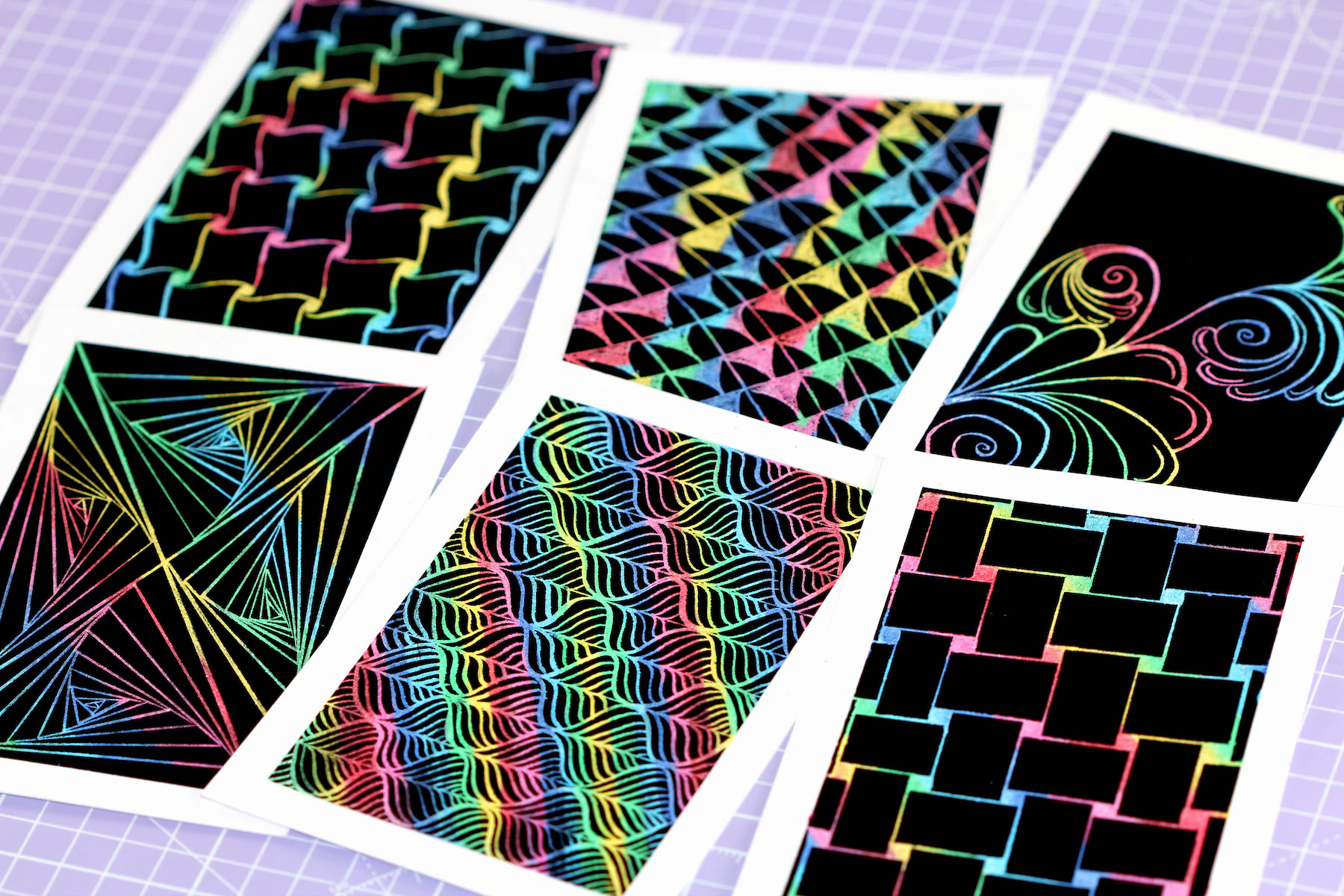Sgraffito is a fantastic art technique that can be used to create art with real impact, toppers for cards or just for spicing up your sketchbook. Plus it's so much fun to learn!
Follow along with our step-by-step tutorial, learn sgraffito techniques and how to do sgraffito, right here on Gathered.
We’ve also got a round-up of all the equipment you need to get started and provide handy links to products we recommend.
What is Sgraffito?
So – what is sgraffito in art? It’s also called Scratch Art, and you might remember it from school, and it’s a brilliantly fun technique to introduce to little ones. Sgraffito is a form of decorative art, where you scratch through a surface to reveal another layer of colour (or pattern). The name "sgraffito" originates from the Italian word graffiare, which literally means “to scratch” – so it’s no surprise that sgraffito as an art form, originated in Italy.
Sgraffito played a significant role during the Italian Renaissance, particularly for its use in decorating building exteriors and palace facades. Its origins potentially date back as far as the 15th Century – that’s 600 years ago!
Sgraffito is a popular technique still used in painting, pottery or glass making, but for the purposes of this article, a beginner’s guide to sgraffito, we’ll be talking about sgraffito used in 2D art, rather than glass or ceramics. So, get your sketchbooks ready – it’s time to get arty!
Sgraffito supplies
Oil pastels
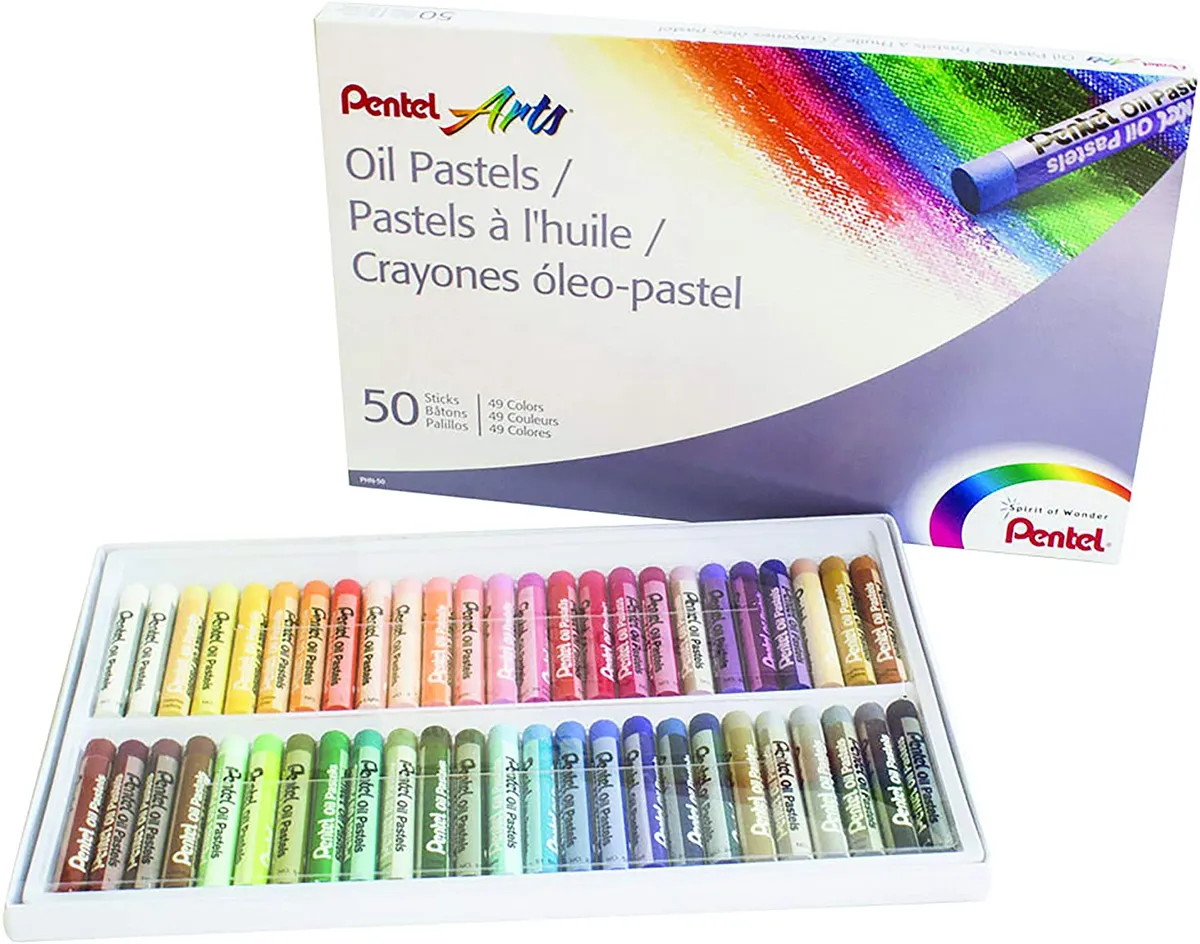
Buy now: £6.99, Amazon
Oil pastels form the base of your sgraffito art, and can be picked up from all good art or stationery shops. This set from Pentel, available on Amazon, has over 15,000 positive reviews and has 50 different colours in the pack, making this a good option with a good price point if you’re just starting out. Using oil pastels can be messy, so try to keep the paper wrappers on each of the sticks if you can, but if the wrappers come off, loop some paper to keep your fingers from getting stained. Check out our brilliant beginner's guide to using oil pastels for an easy step-by-step tutorial on how to draw a fantastic woodland scene, written by expert Matt Breen.
Sturdy paper or card
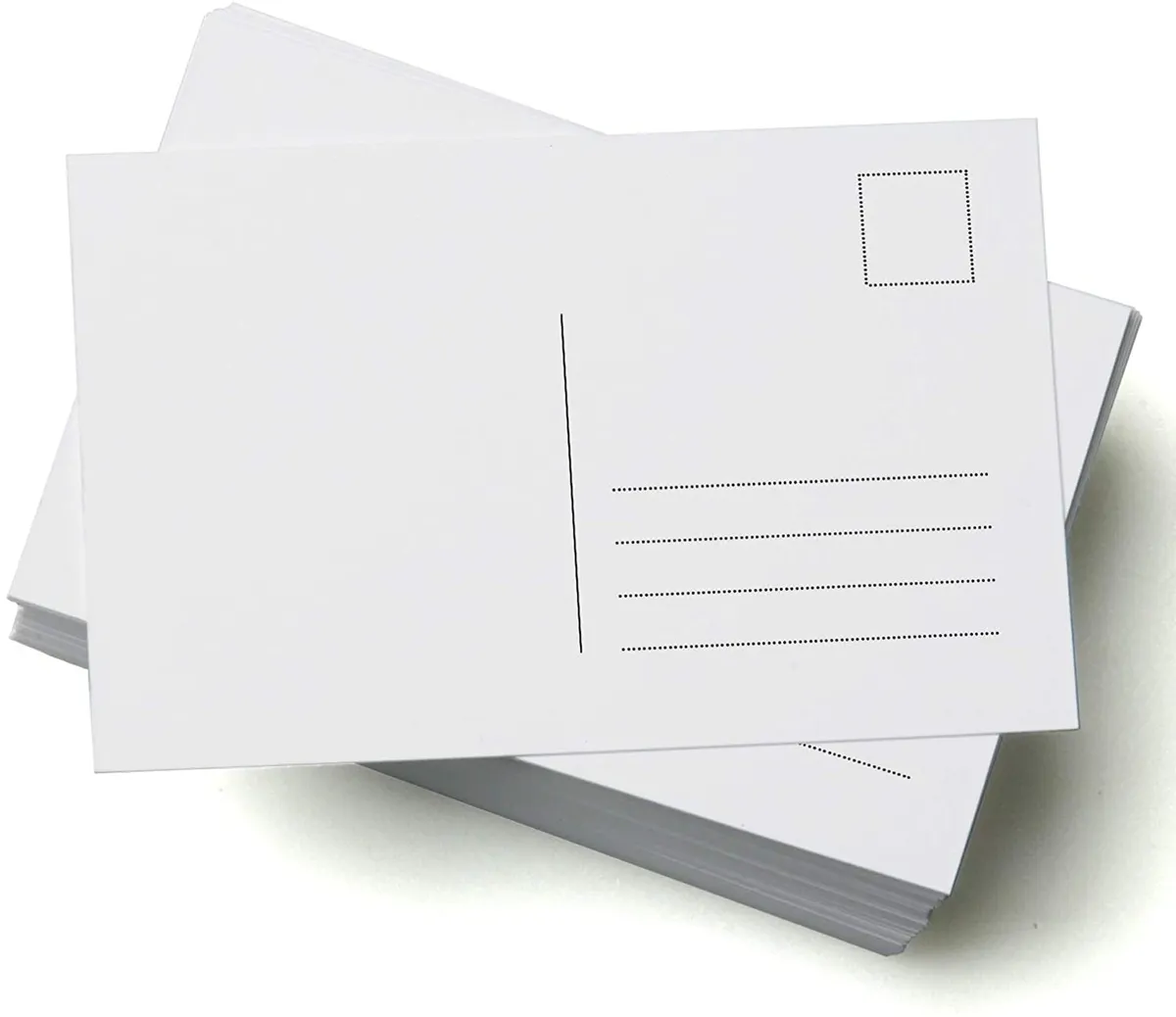
Buy now: £3.99, Amazon
Using sturdy paper or card will help when you come to scratching away your design as it won’t buckle or rip easily. Why not get creative and use something like these 350gsm blank postcards? The smaller size has the added bonus that it will take less time to cover the card with oil pastels, so if you’re looking to just try out the technique – this is a good option.
Indian ink
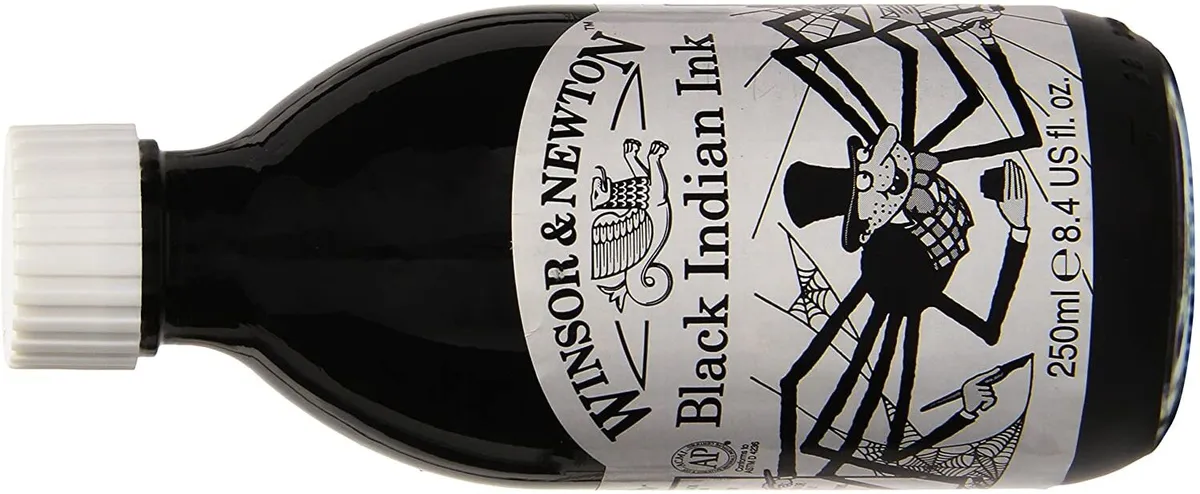
Buy now: £17.50, Amazon
In sgraffito, Indian ink is applied over the top of your oil pastel (or wax crayon) and is scratched away to reveal the colour underneath. Indian ink provides a good even finish, it's thick and is easy to apply using a brush or a sponge. If you’re planning to make a lot of sgraffito art, or can feel yourself getting into it – then it’s worth opting for a slightly bigger bottle of Indian ink. If you're keen to get into ink drawing, check out our guide, Ink Drawing for Beginners, written by expert Sarah Orme.
Brush or foam brush
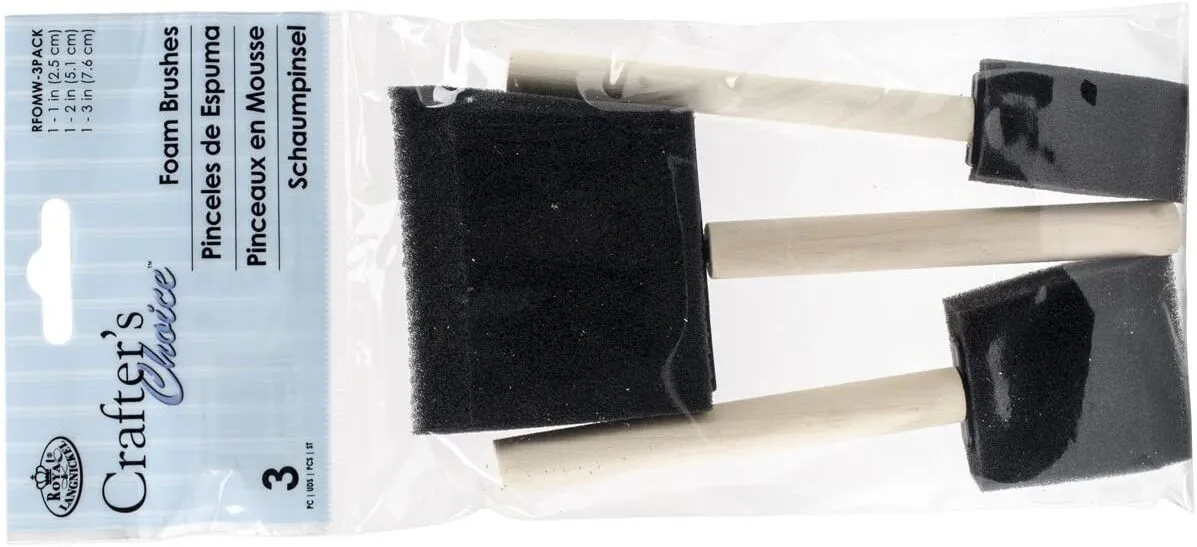
Buy now: £2.93, Amazon
Using a foam brush to apply your ink can yield super-smooth results. They’re cheap to pick up from most craft stores, or you can make them yourself at home by cutting up a kitchen sponge into squares. And of course, a normal brush works, too. If you opt for a normal brush, opt for one that has a wide, flat tip for even application of the ink.
Tools for scraping
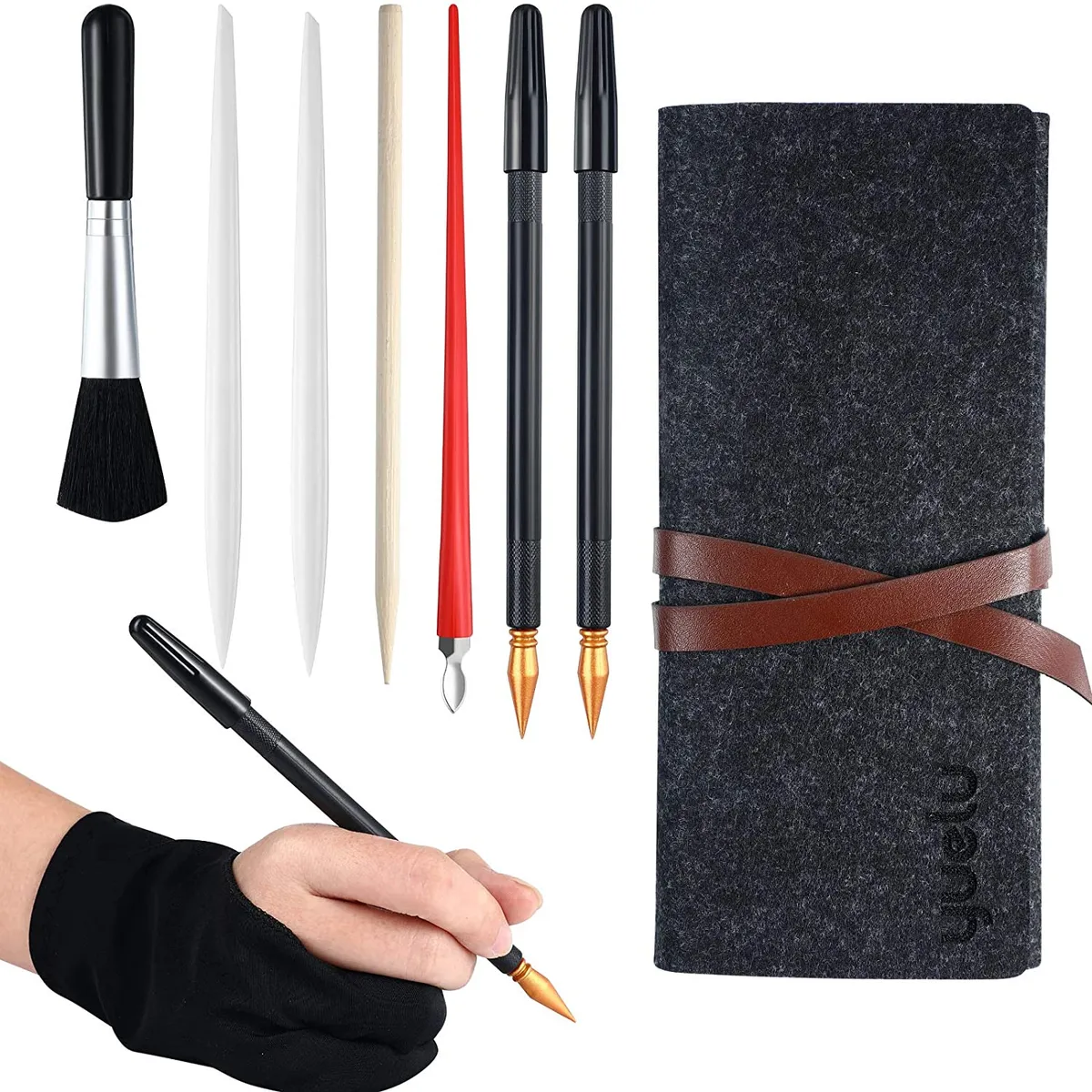
Buy now: £7.99, Amazon
You can use a wide variety of tools for your scratch art, and different tools will yield different results. Experiment by using pen lids, cocktail sticks, forks and dip pens. Alternatively, a set like this one will contain a nice selection of tools in a neat pouch to keep them protected. It also comes with a useful brush for brushing away the bits of dried, scratched off ink (and trust me - the scratched off ink gets everywhere!), as well as an artist’s glove.
Simple tools for scraping
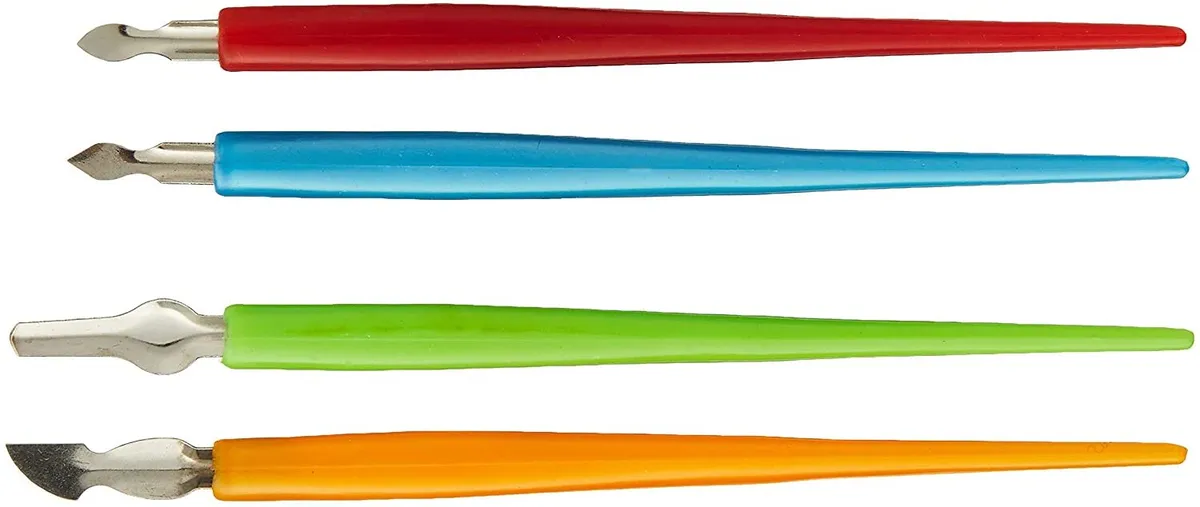
Buy now: £3.95, Amazon
Want to keep it simple? A selection of tools like in this set will do the job and includes four different nibs to experiment with. You’ll soon get a taste for which type of nib is your favourite and won’t break the bank in the process.
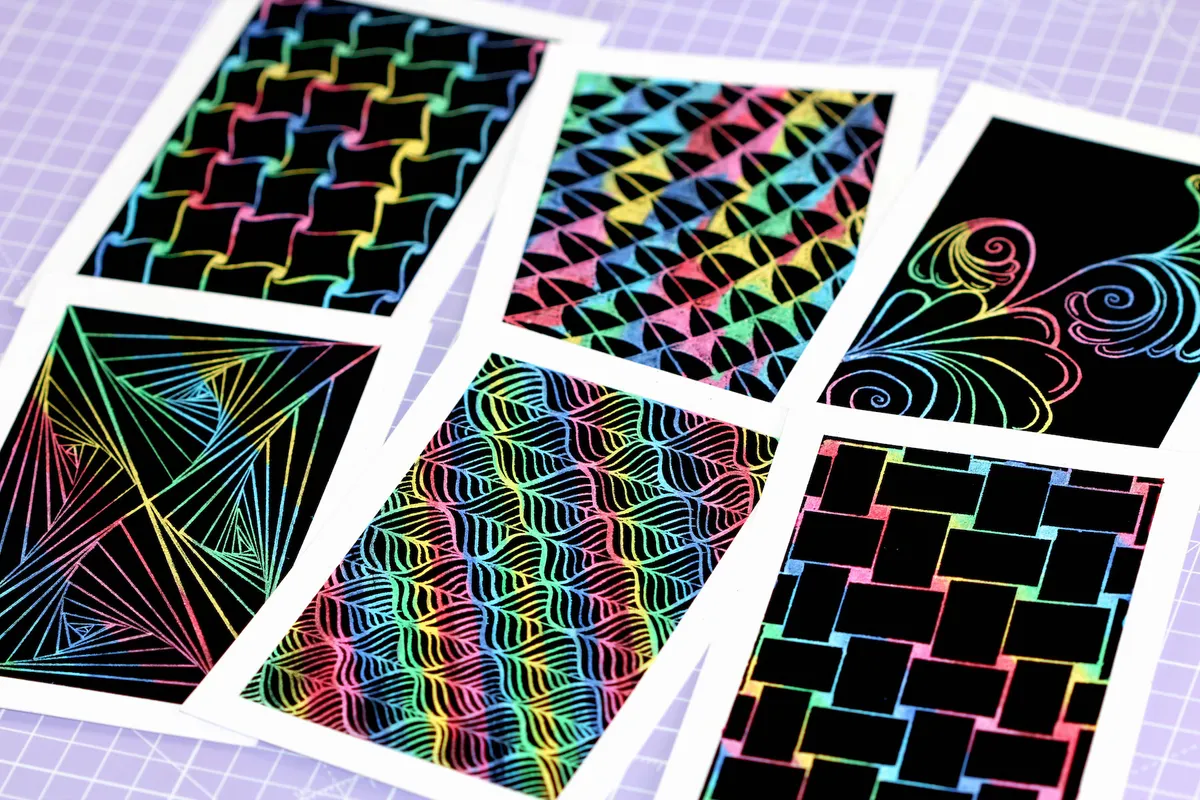
How to do Sgraffito
Ready to get stuck in? Let’s learn how to do sgraffito, and learn these six easy zentangle patterns in the process.
You will need
- White card
- Oil pastels (or wax crayons)
- India ink
- Low-tack masking tape or washi tape
- Tools to scratch with
- Paintbrush or foam brush
